News
For Your Reference: Books About Signs
From retail branding to wayfinding, sign letters shape our urban landscape. Get a peek at the Archive’s stacks in this first stop on our reference library tour.
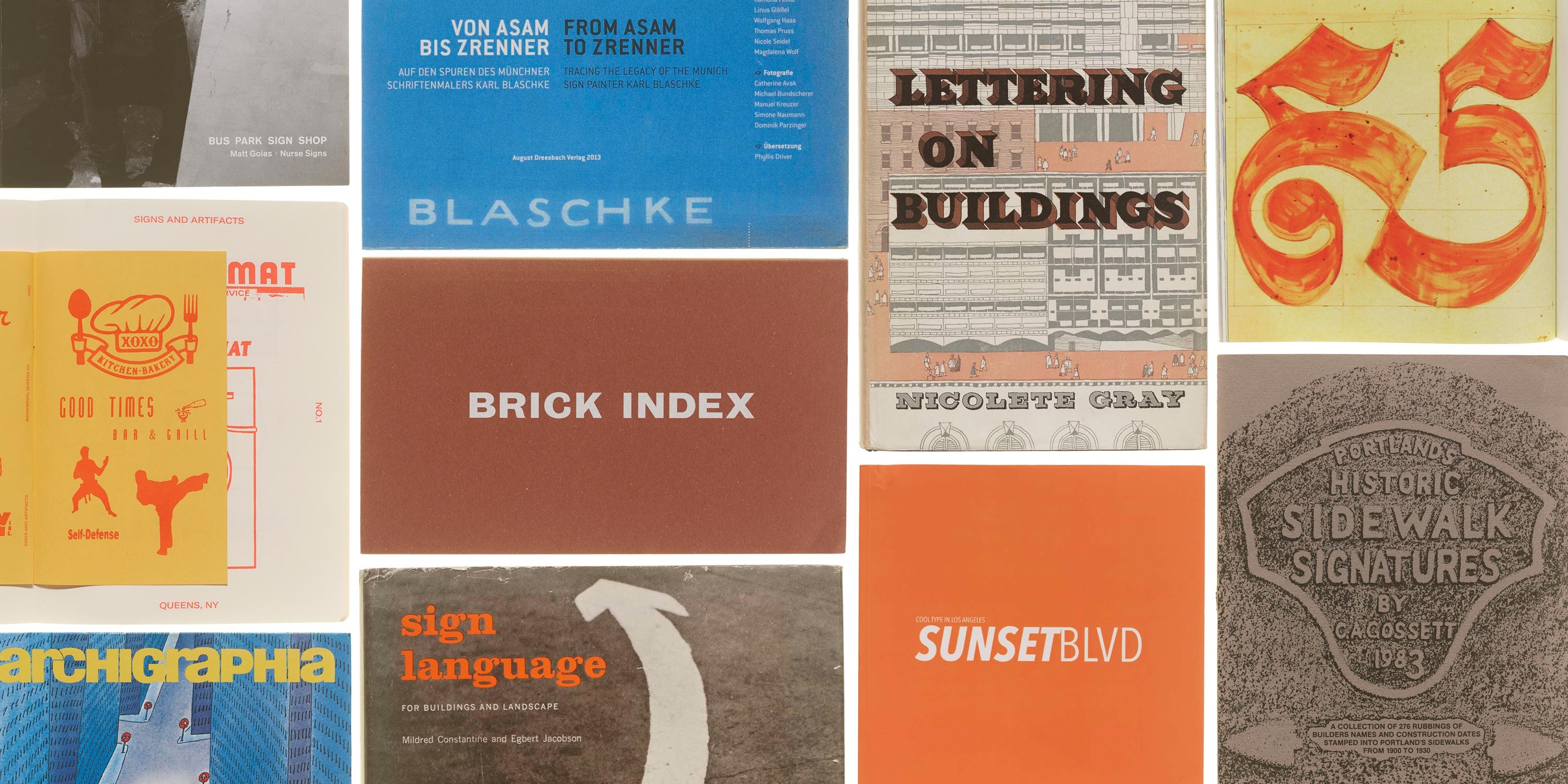
As an omnipresent artifact of design, signs have a universal ability to both impart information and evoke a feeling. Sign documentation — whether online or in a book — can be a portal into a place’s cultural history. It captures a typographic snapshot of a city. It tells a story about evolving reproduction technologies and how they affect design choices, how commercial dynamics affect cityscapes, and how typography can communicate the intangibles of a business and its clientele.
As someone who conducts “typewalks” (guided tours with a focus on lettering) around Mumbai, I'm always interested in these stories. Sometimes shop owners have a story or three to make my day, but the diminishing number of handcrafted and painted signs, or the skilled workers who fabricate them, have me wishing for more resources to learn about the way things were. So, when I got the opportunity to ask my editor, Stephen Coles, about the reference books available on the subject I was in for a treat.
Letterform Archive has a significant collection of lettering instruction manuals, showing how letters are written, painted, and drawn, but the general “Signs” section of the stacks opens windows into the existing letterforms of our urban landscapes. Below is the first of a series that will take us through the reference library at the Archive. Let’s take a quick tour of some of the highlights on these shelves.
Vintage Signs of America
Debra Jane Seltzer, Amberley Publishing, 2018
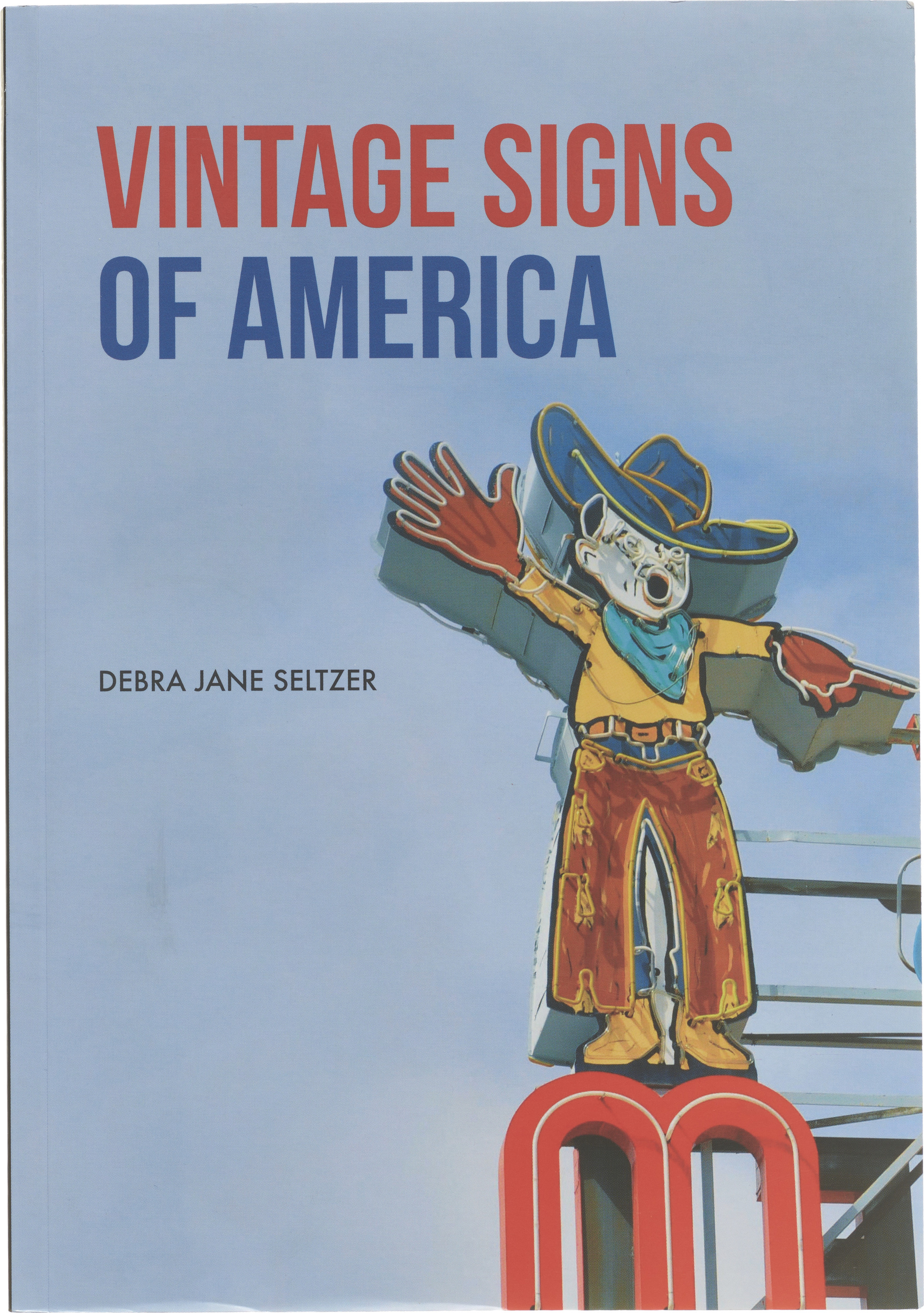
The transcontinental tour begins with Vintage Signs of America by Debra Jane Seltzer, who has spent decades traveling and photographing signs across the United States. This visual essay of neon, painted, and other handmade signs is accompanied by her recollection and commentary on the fast disappearing pieces of public art. She and her dogs travel hundreds of miles every year by by van, taking pictures of signs and documenting how they’ve changed. She also takes the time to take us through her roadtrip process, with a call to step out and photograph signs for yourself. Her passion for witnessing and documenting this ephemeral artform deeply resonated with me.
“What you are witnessing in your own town and in your own state, is happening everywhere in America. Old commercial strips are being replaced with a monotonous mix of chain stores. “Dated” mid-century buildings are being demolished for contemporary boxes. Neon signs are being dumpstered for plastic box signs. Treasures are being lost on a daily basis. The time to travel and see them is now!” — Debra Jane Seltzer
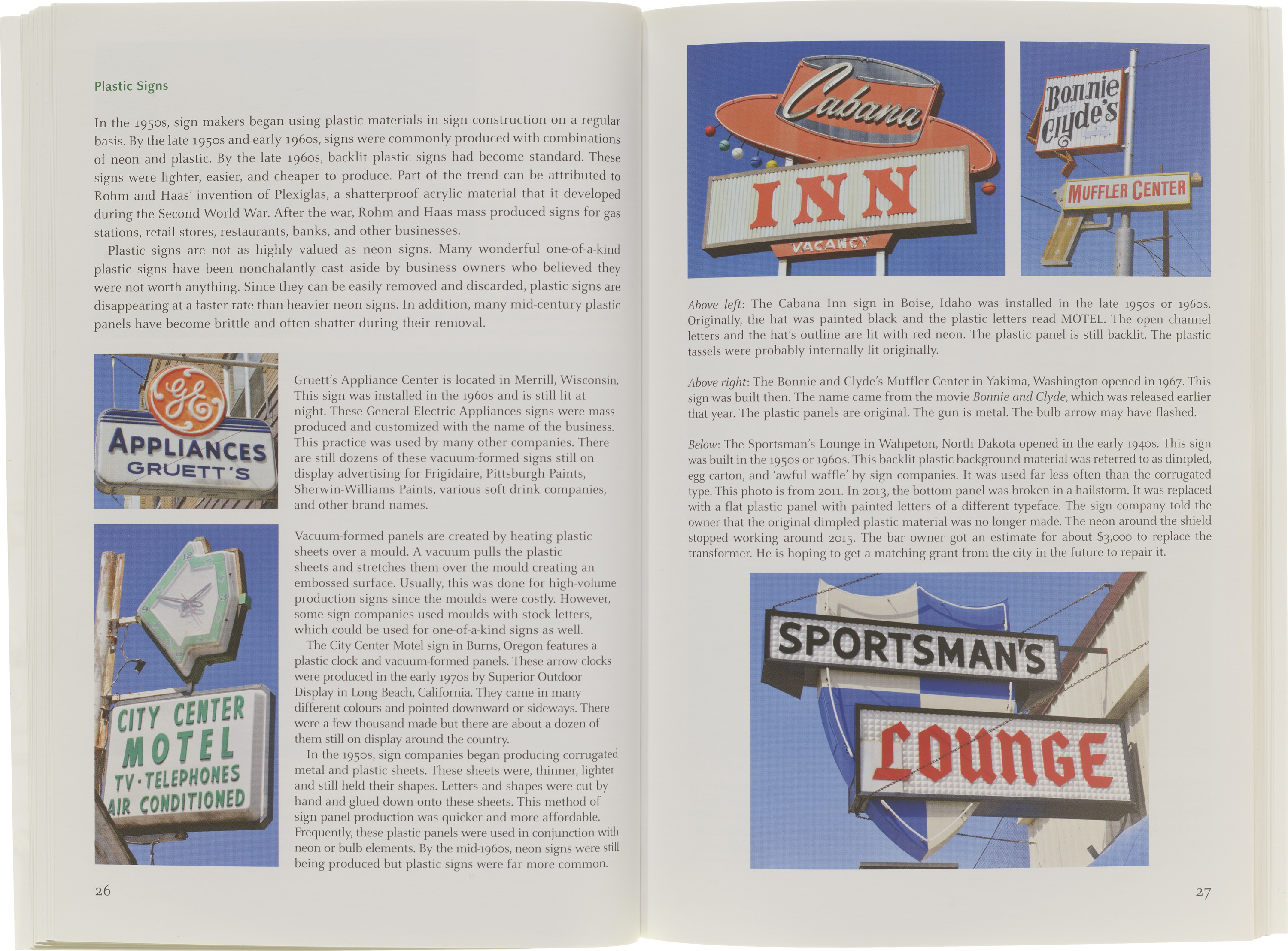
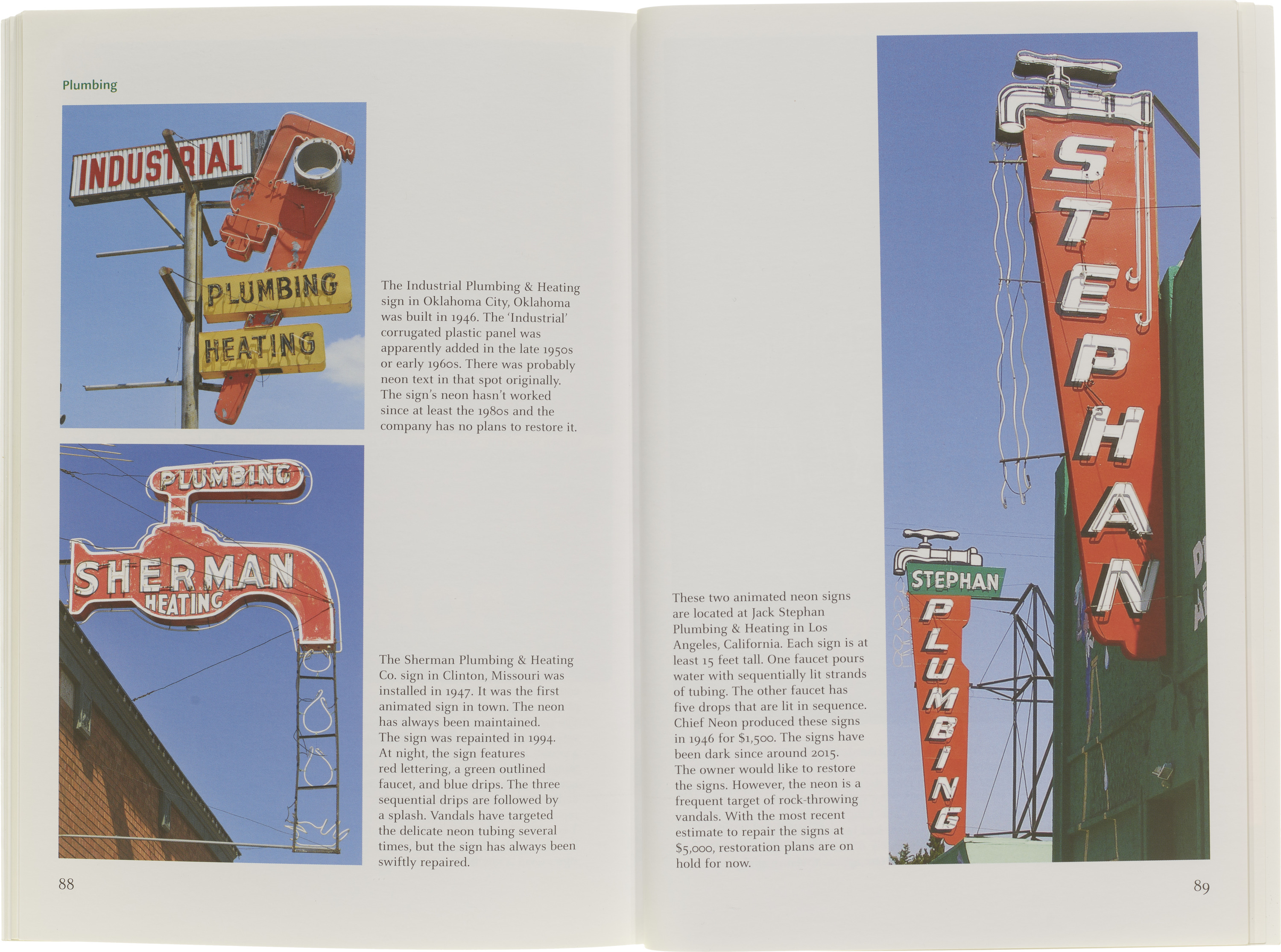
Brick Index
David Kitching, CENTRE CENTRE, 2019
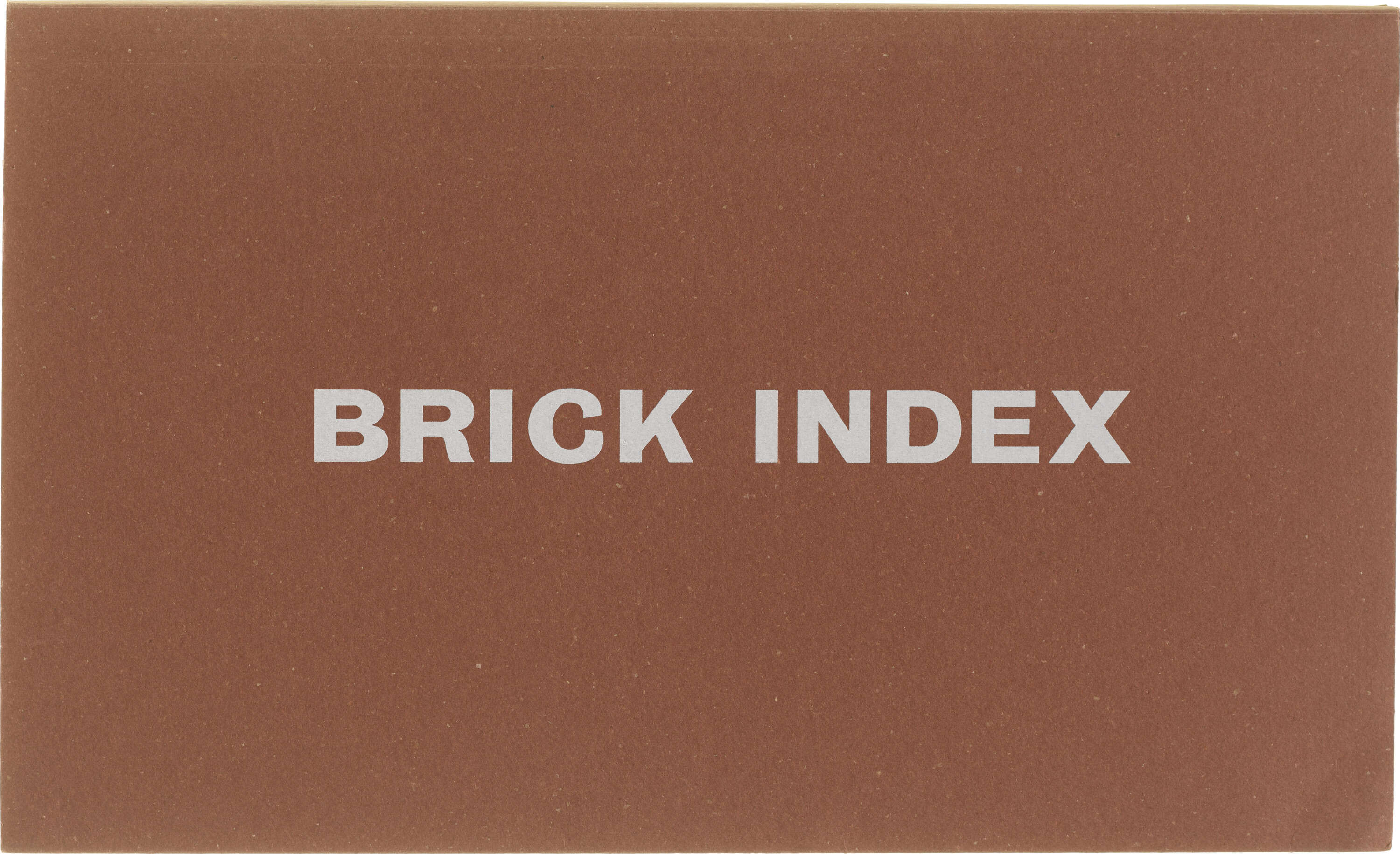
Published by CENTRE CENTRE, this book is not about the signs on the walls of buildings but the letters hidden inside the walls themselves. Shaped and sized like a brick, every page is a plain and beautiful photograph of a brick and its maker’s mark. I am surprised (as other people are when they hear about type historians) to discover the book’s author, David Kitching, is a brick historian. But an object even more ubiquitous than letterforms, obviously has its own scholars. Kitching’s essay, along with one by noted design critic Rick Poynor, is accompanied by photographs of 155 bricks.
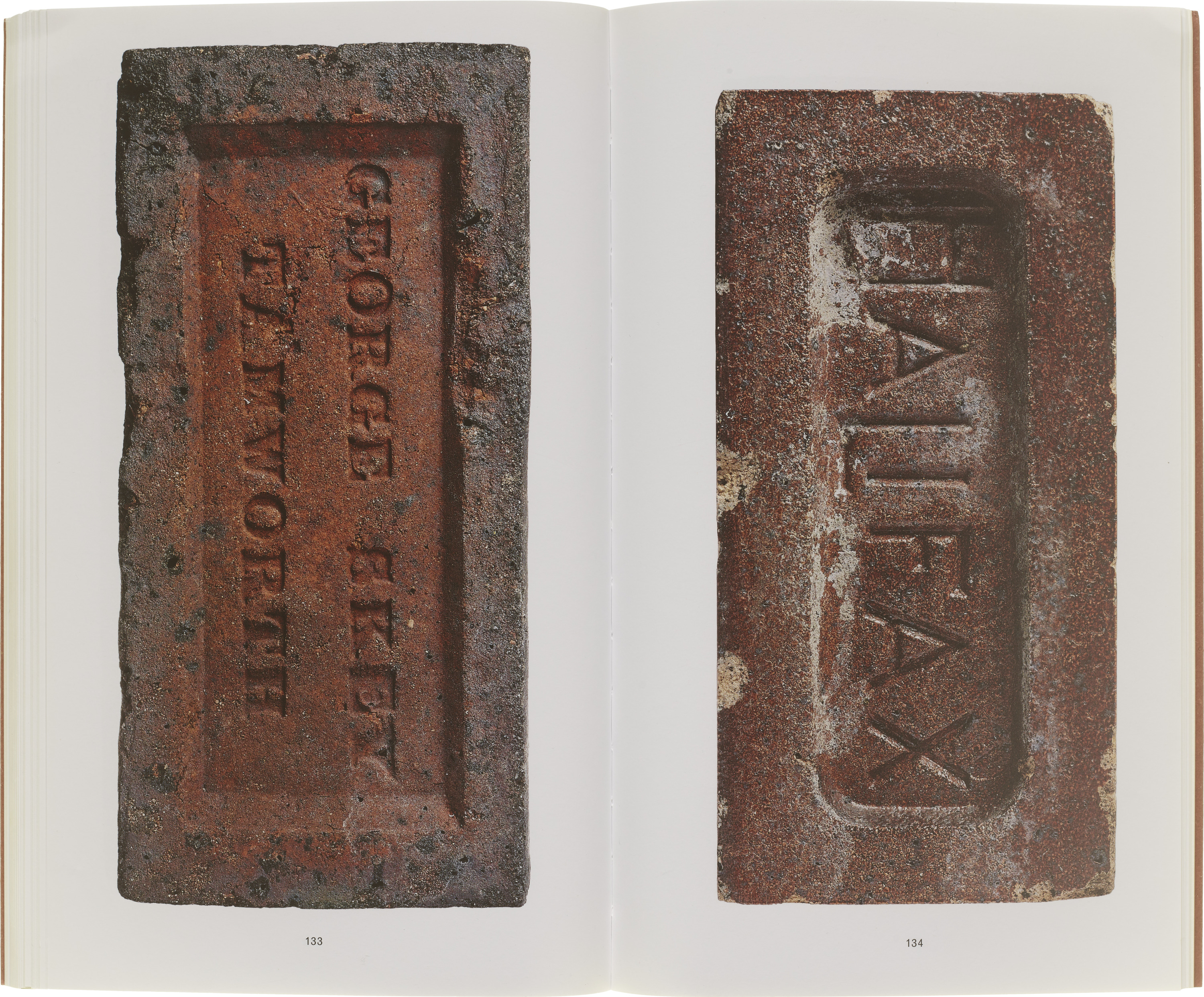

Supernew Supergraphics
Unit Editions, 2014
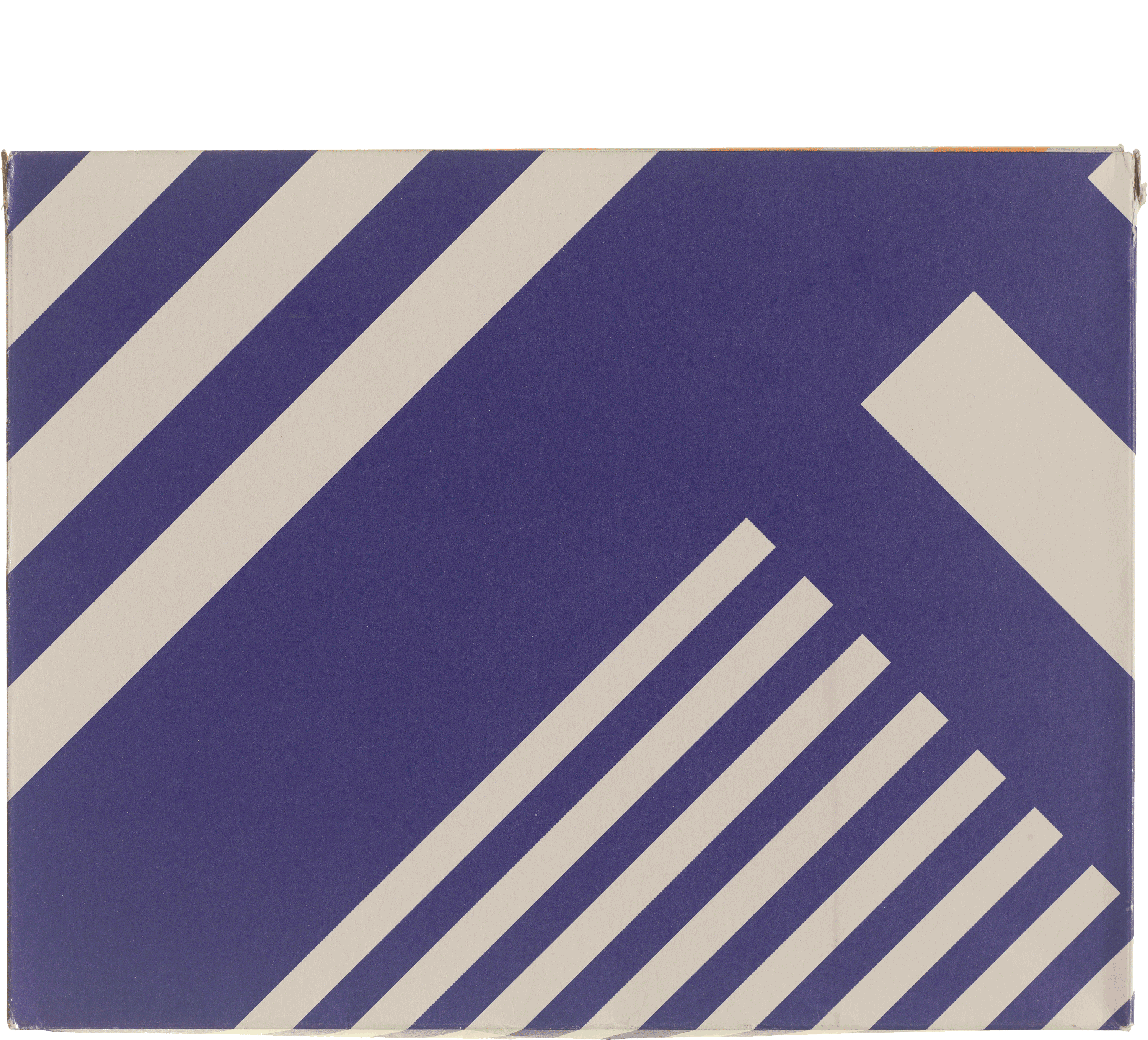
Supernew Supergraphics is one of the larger books in this section of the stacks. Easing out of a slipcase, its bright orange striped binding opens to a collection of graphic design at a monumental scale. Pioneered in the 1960s by designers like Barbara Stauffacher Solomon, supergraphics have seen a recent revival as artists like Barbara Kruger and Na Kim use paint and vinyl to fill museums, shops, and public spaces with big letters and graphic forms.
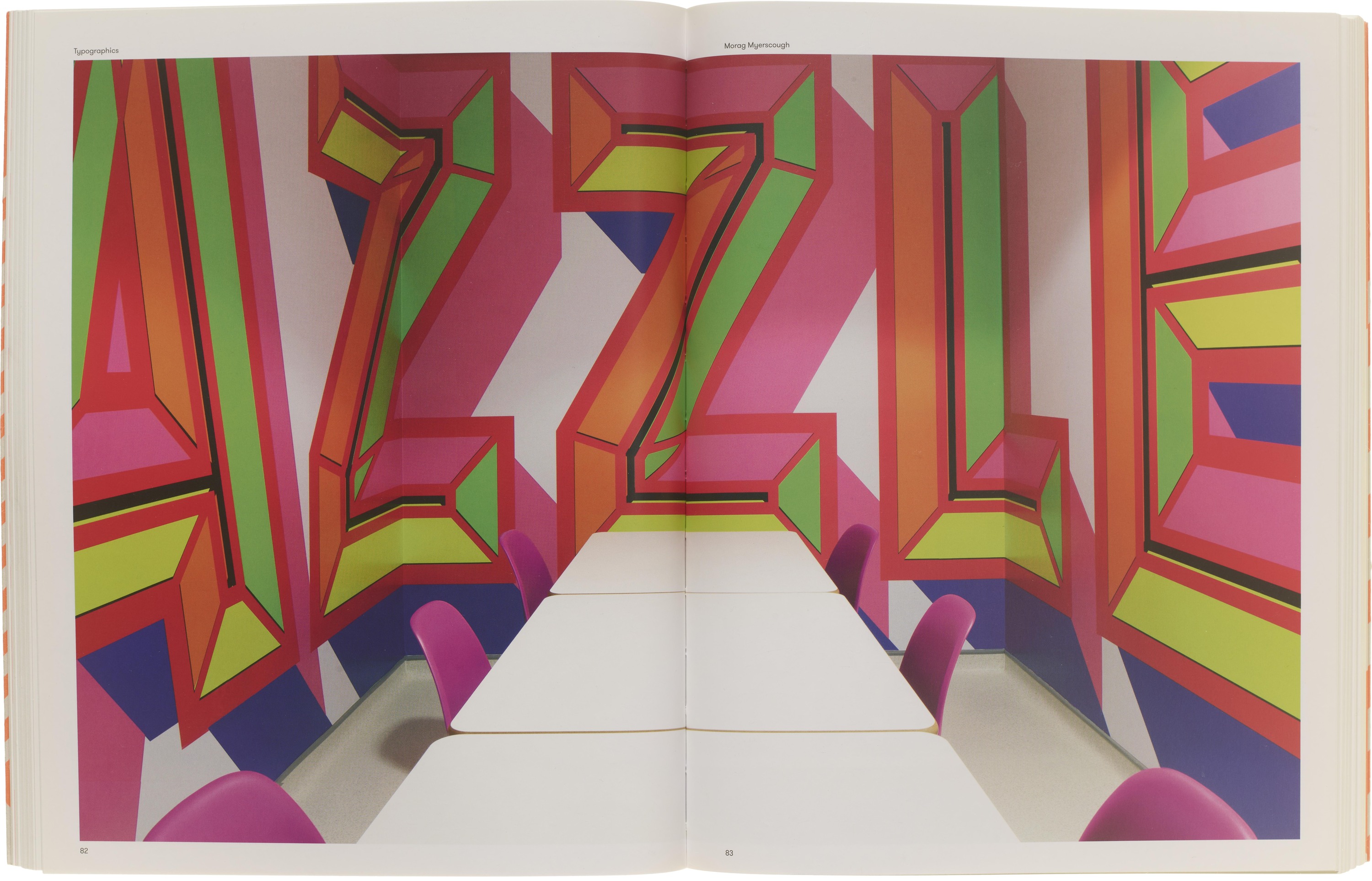
Signs: Lettering in the environment
Catherine Dixon and Phil Baines, HarperCollins, 2003

Next, I am delighted to spot a familiar book. My copy has a different—and now slightly worn—cover. I referenced it frequently when I was building my first walk and I keep returning to it. Usefully organized by application, Phil Baines and Catherine Dixon’s photos and writing focus on the lettering and typography of public spaces. It is a great primer for any typewalker.
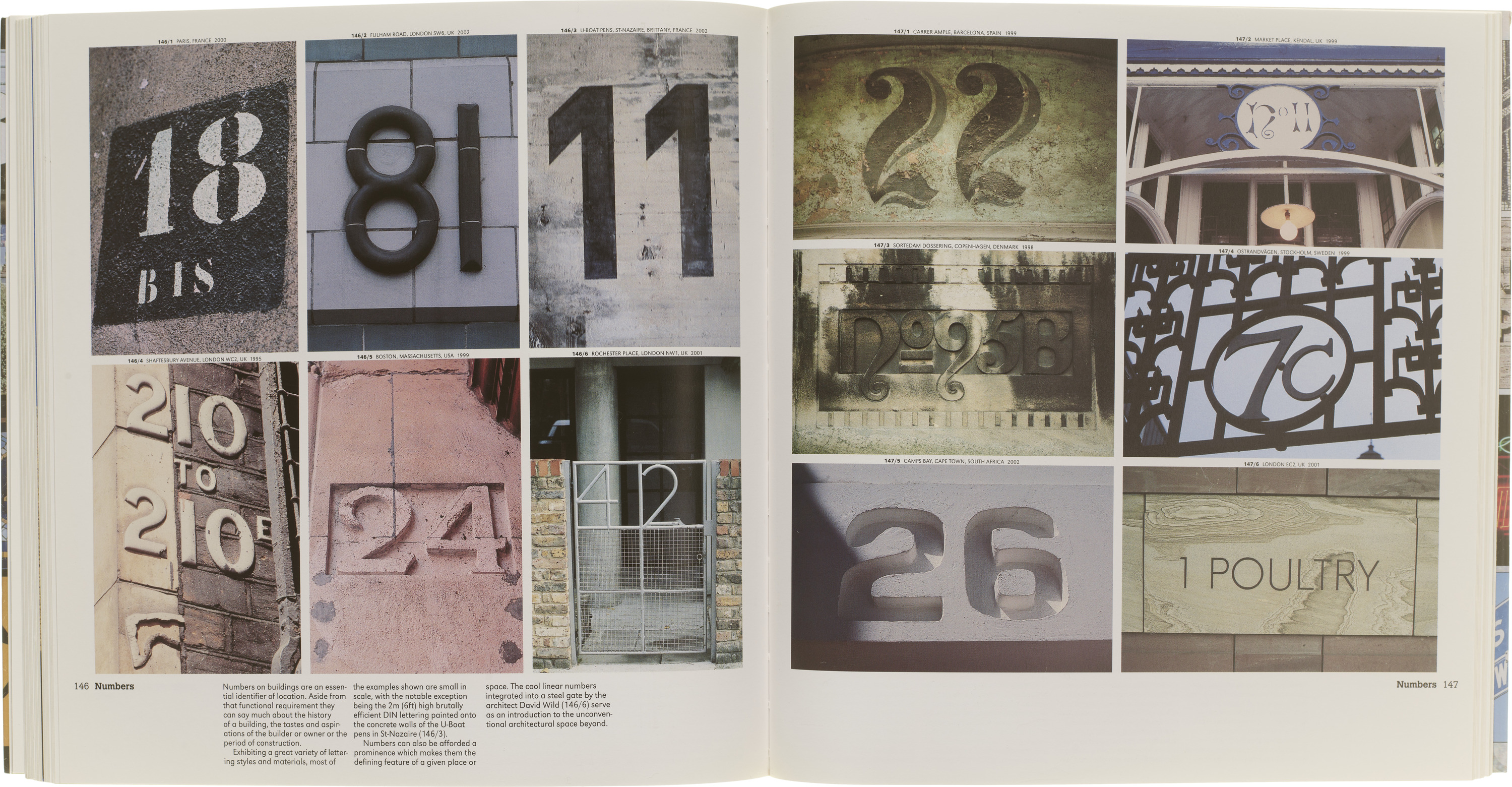
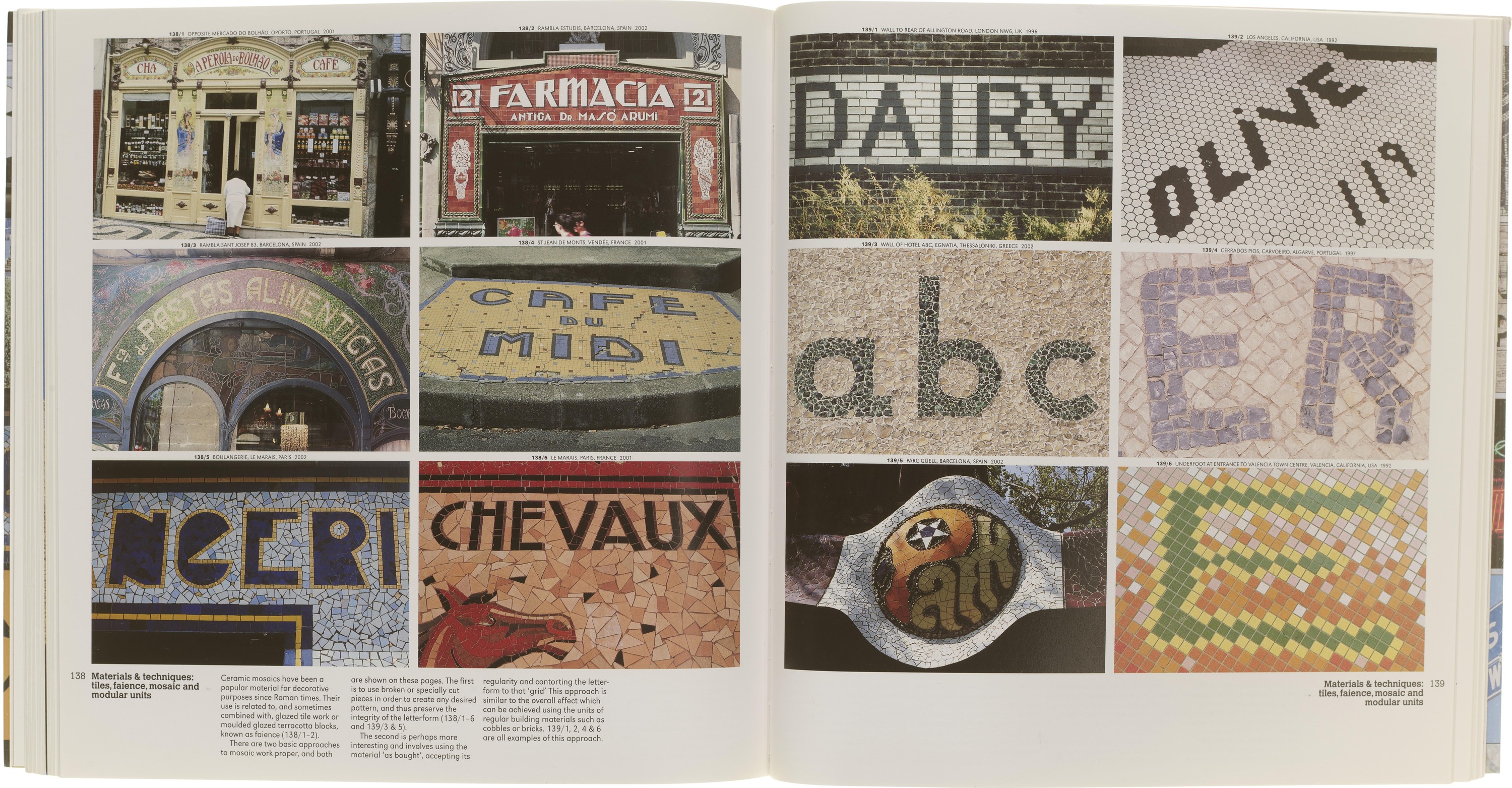
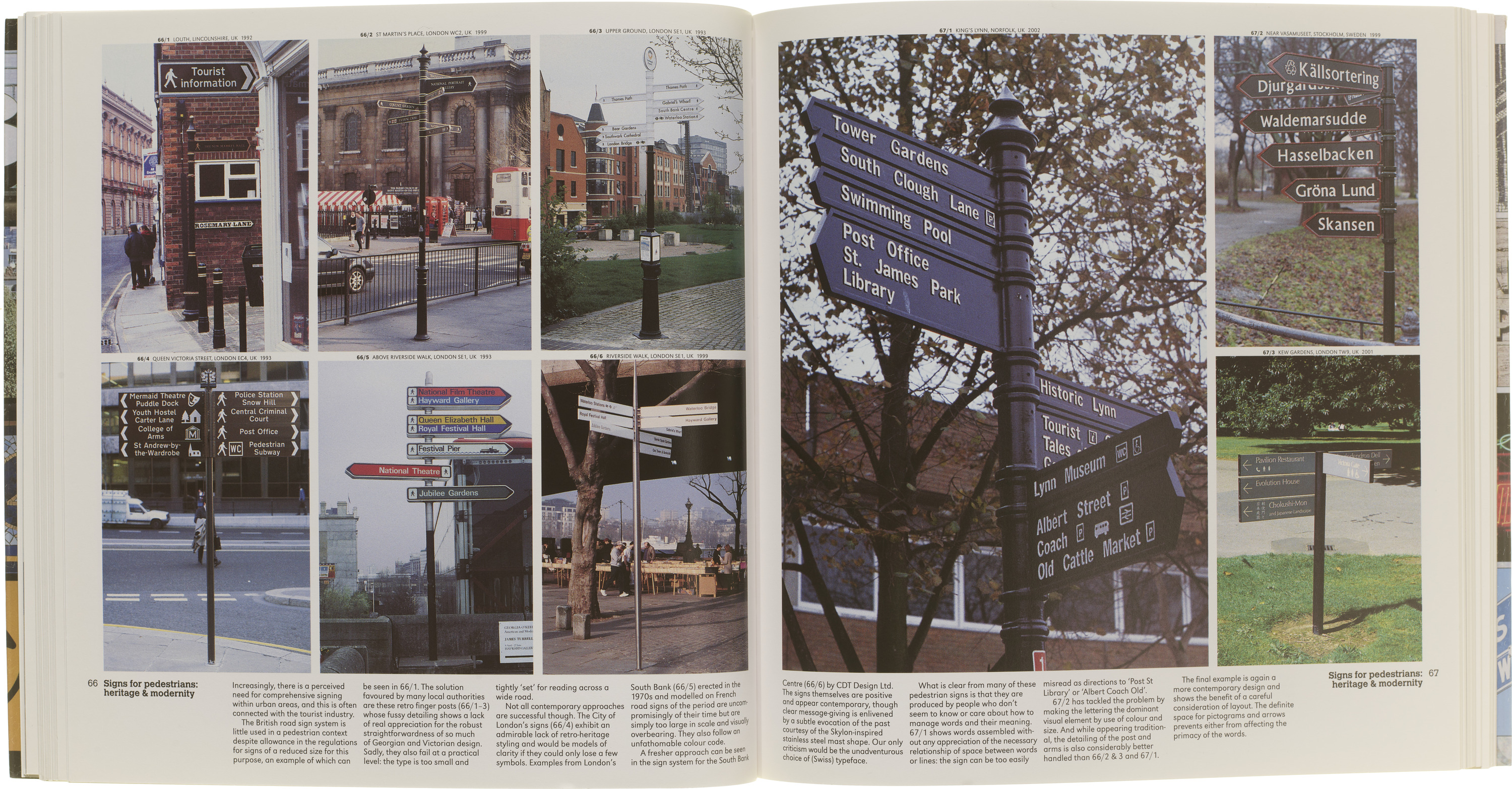
Archigraphia
Graphis Inc., 1978

A Graphis publication, Archigraphia is an overview of environmental graphics from all over the world across the years. One standout spread is a wall credited to Lou Dorfman for the CBS offices employee lunch room. I was recently introduced to Dorfman's work, as the Archive has about 40 pieces of CBS ephemera from his time at the company. The "Gastrotypographicalassemblage” listed food items as typographical puzzle pieces that fit to make up a wall installation. The idea is something seen to this day in corporate cafeterias, only this is set in hand-milled wood lettering. Designed in 1955, the design listed Herb Lubalin and Tom Carnase as contributors.
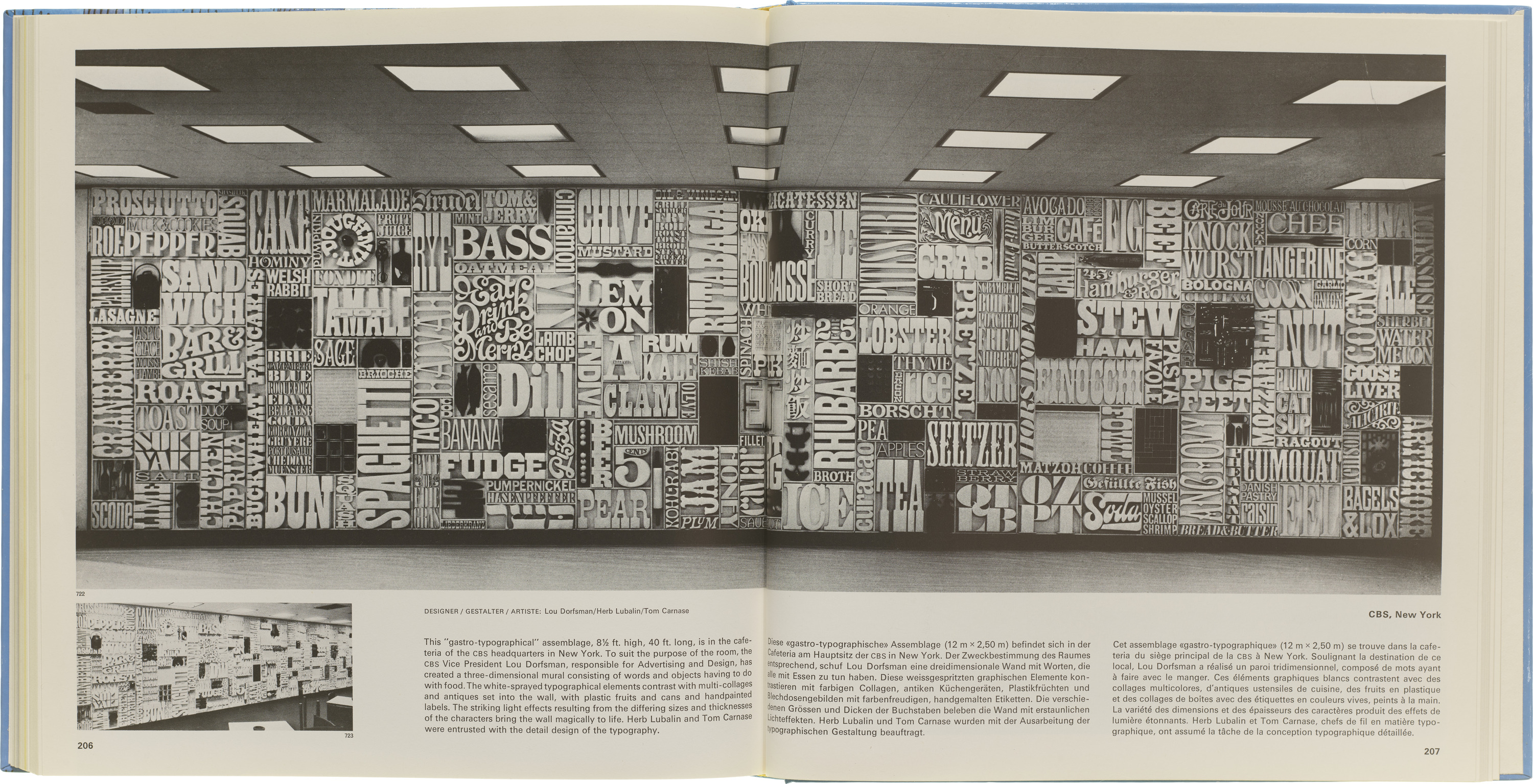
Lettering on Buildings
Nicolete Gray, The Architectural Press, 1960
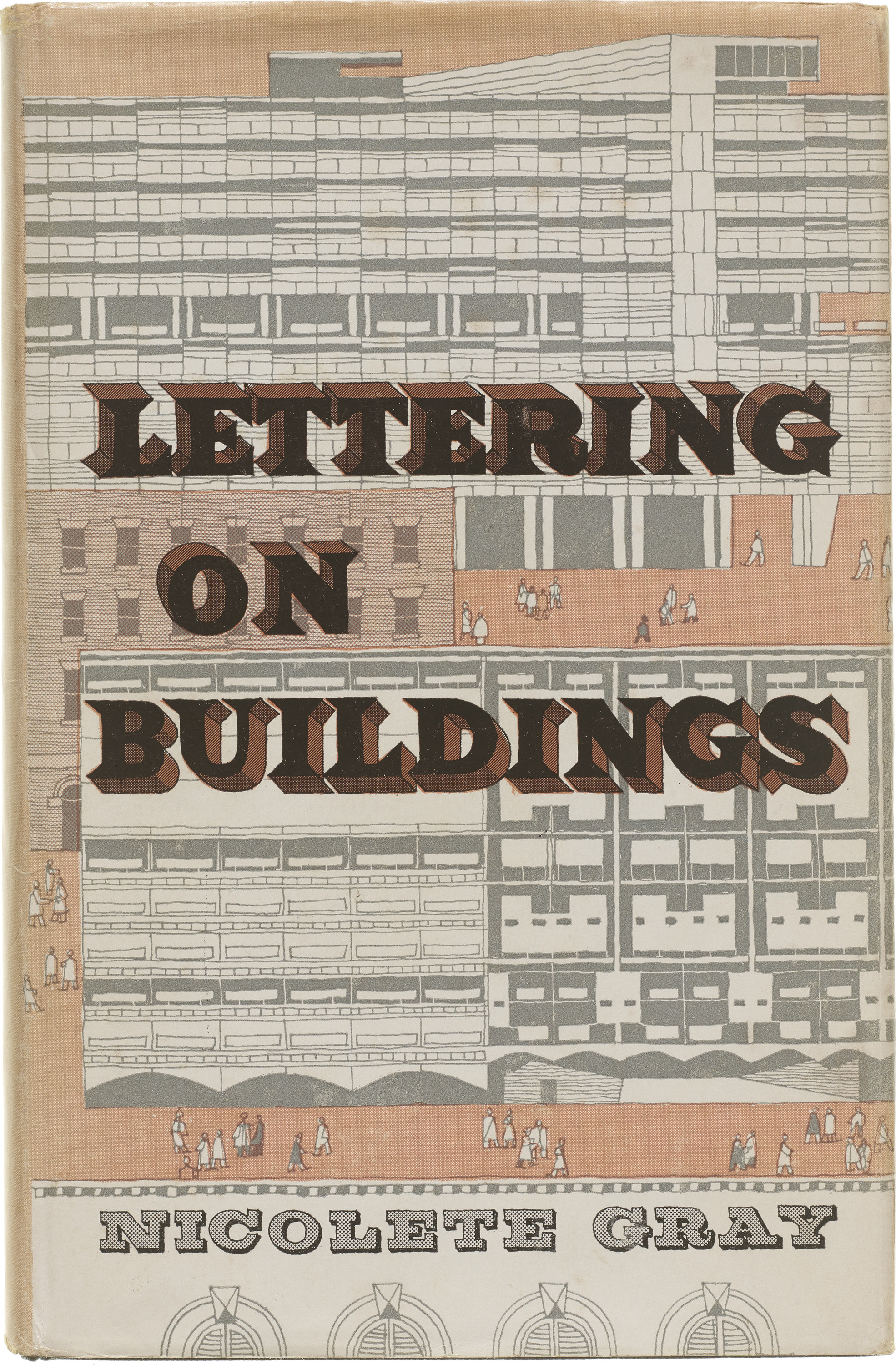
Nicolete Gray is best known for her later book, Nineteenth Century Ornamented Typefaces (1976). As Stephen opens the cover of this earlier book, we discover through the inscription that it belonged to noted calligrapher Alfred Fairbank, who was gifted this copy by the author herself! While the book is a study on the relationship between lettering and architecture, you can tell by the pictures she was focused on the details of letterforms. In some cases, ignoring the building it appeared on. The book is organized by period and style and you can really tell it's designed by and catered for letter lovers.

Portland's Historic Sidewalk Signatures
C.A. Gossett, Sagittarius Press, 1982

While most sign watchers are looking up, C. A. Gossett invites to look down. His book collects rubbings of concrete layers’ names and dates stamped into Portland‘'’s sidewalks from 1900 to 1930. The author includes pictures of his process, as well as the locations of each marking measured in paces from the nearest street corner. The 276 rubbings make me feel like my photographing every sign I like is a relatively tame method of documenting them.
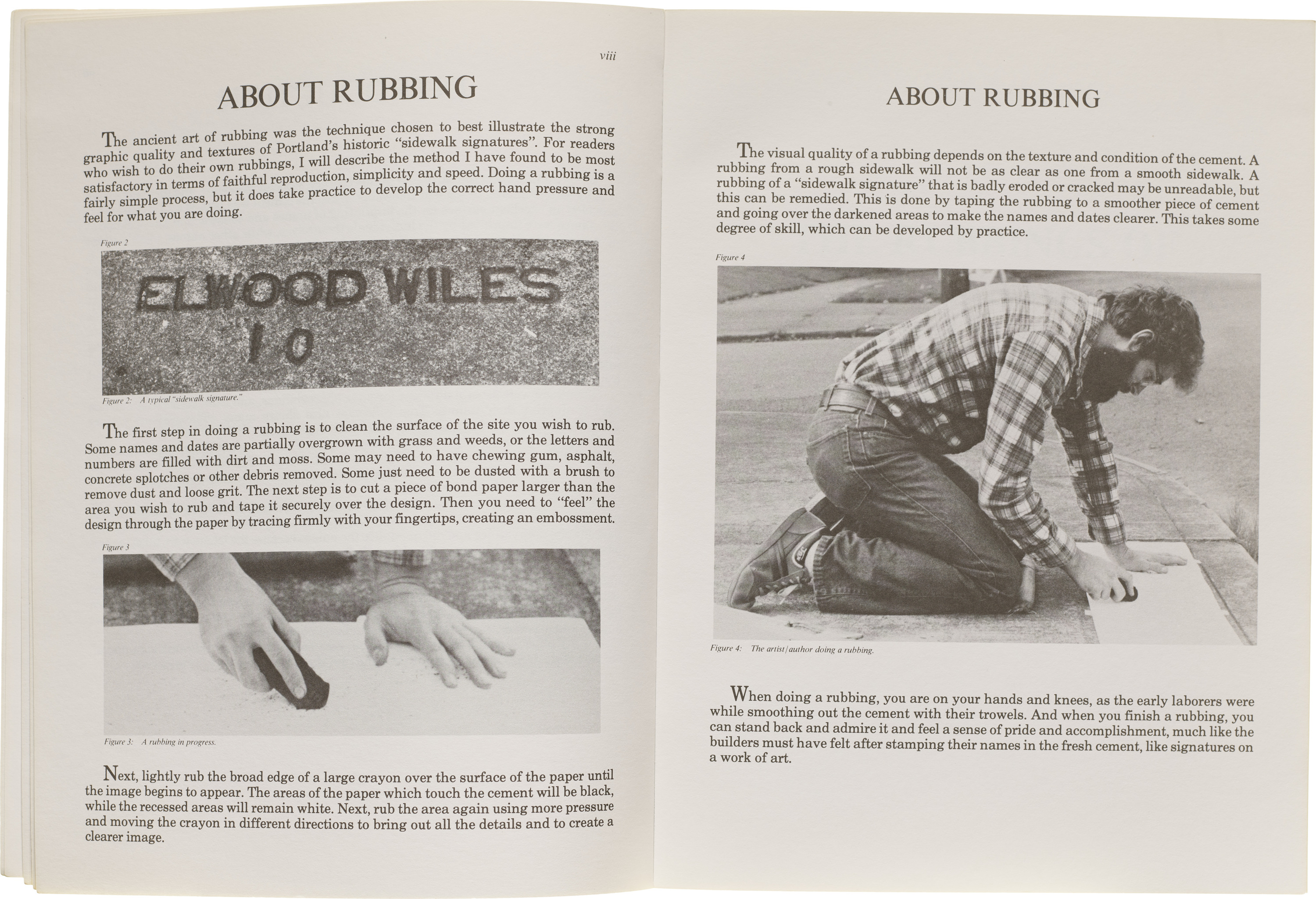
Street Jewellery: A History of Enamel Advertising Signs
Christopher Baglee & Andrew Morley, New Cavendish Books
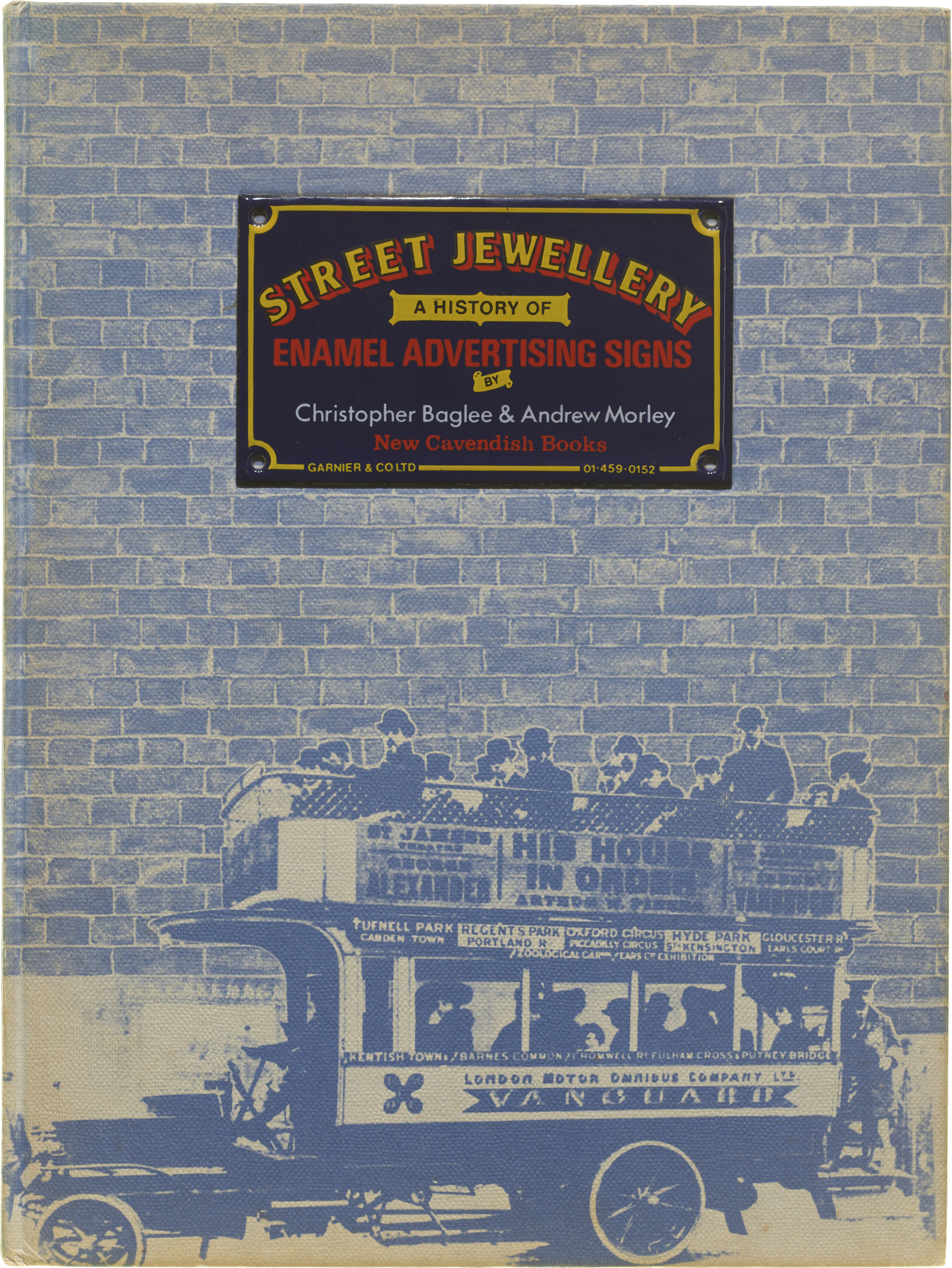
This book is a record of signs made out of enamel. Much of the book is printed in blue ink, barring a few full-color spreads. The entries focus on British signs and lists manufacturers and their advertisements.
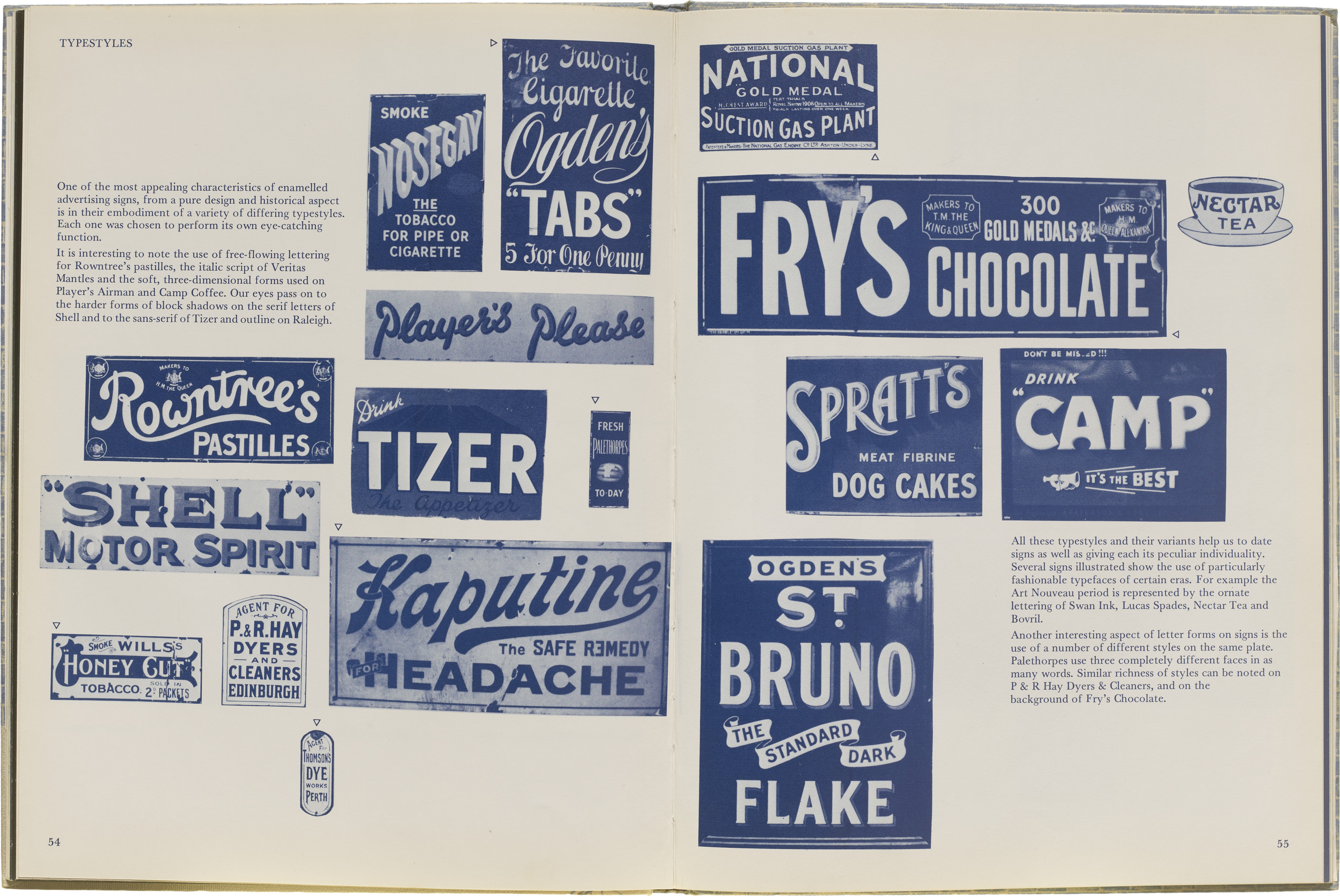
SunsetBLVD
Nephi Sicajan, SunsetBLVD, 2020
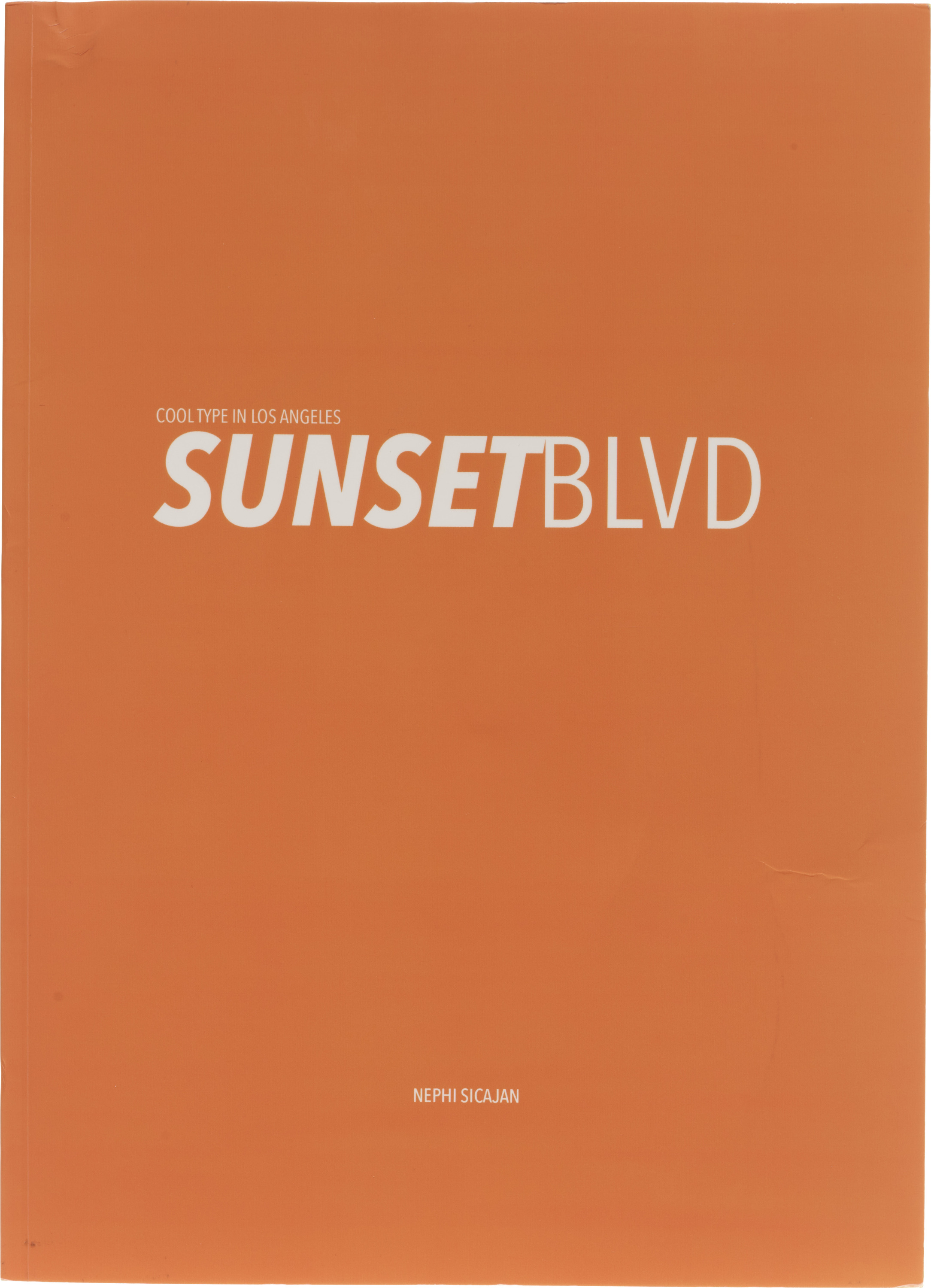
This book is hard to categorize. While it showcases images of typographic signs around Los Angeles, it also acts as an artist’s book offering the author’s own interpretation of the cityscape. The black and white images of the signs are edited to create distinct effects. Sicajan reintroduces the color orange applied confidently on the cover, splashing it throughout various spreads and creating stylized images, while also highlighting each sign. Another Sicajan book, BLM Movement in Los Angeles is featured in the Strikethrough exhibition currently on view at the Archive.
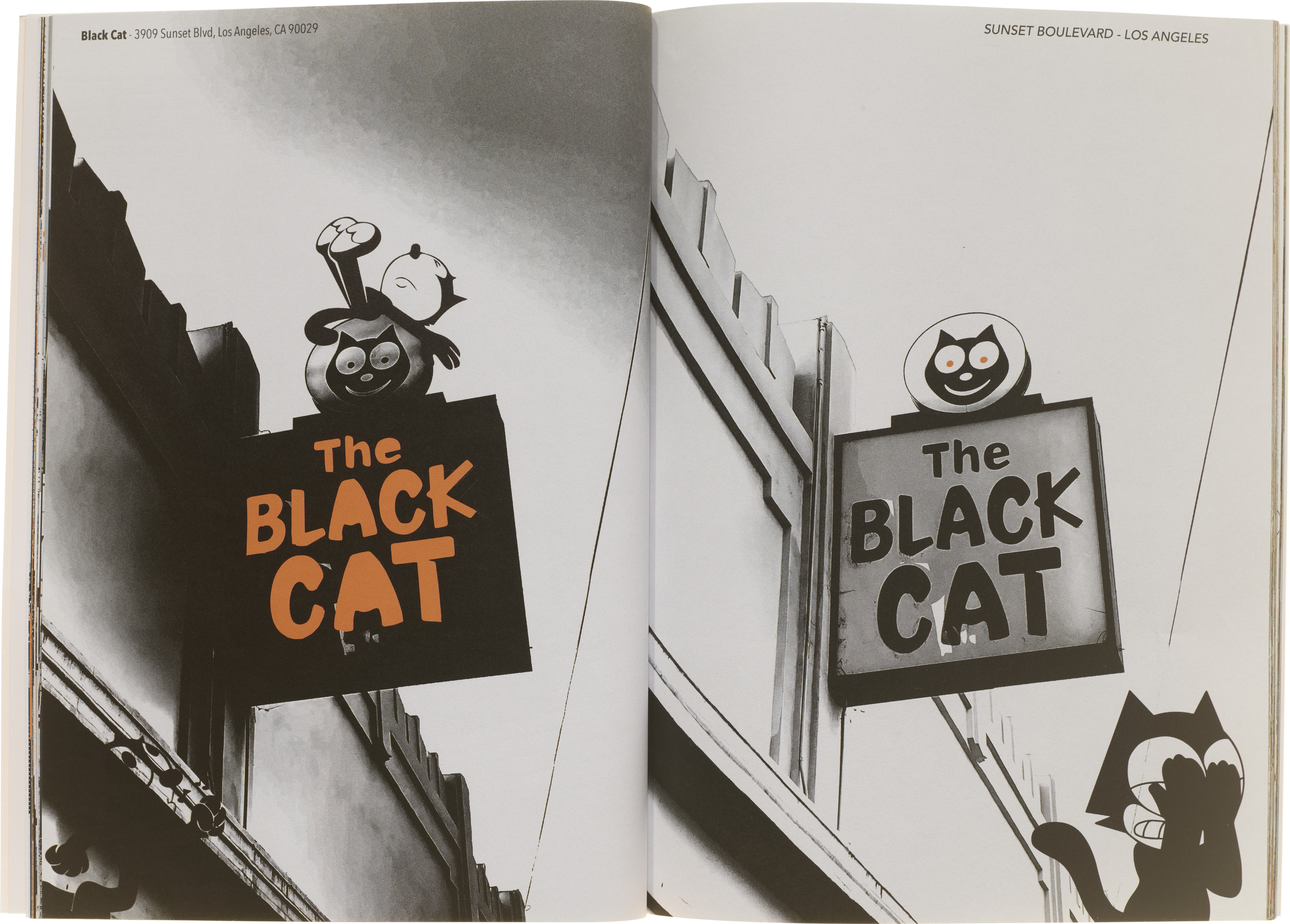
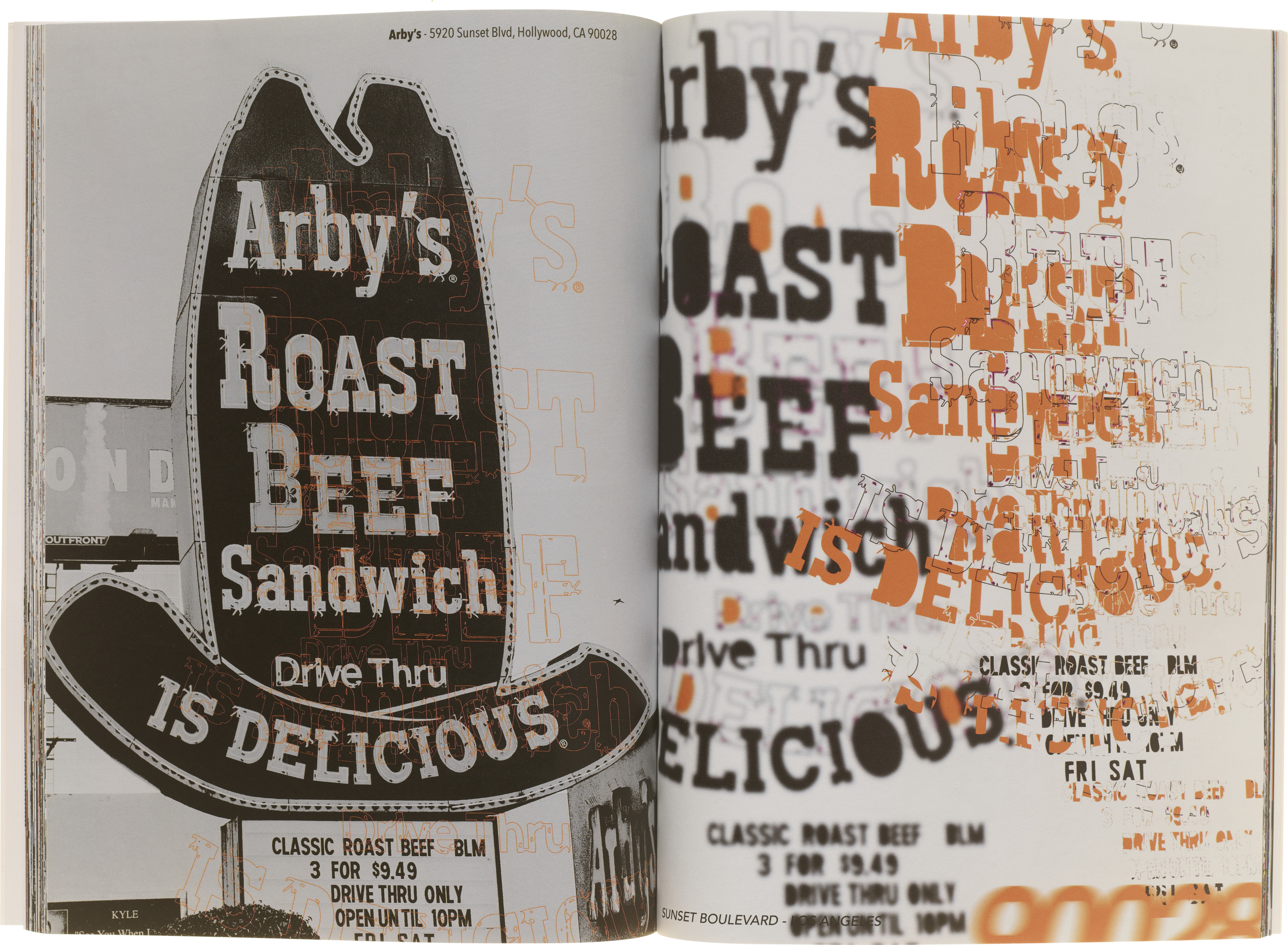
Von Asam bis Zrenner: Auf den Spuren des Münchner Schildermalers Karl Blaschke
(From Asam to Zrenner: In the Footsteps of the Munich Sign Painter Karl Blaschke), Oliver Linke, August Dreesbach Verlag, 2013
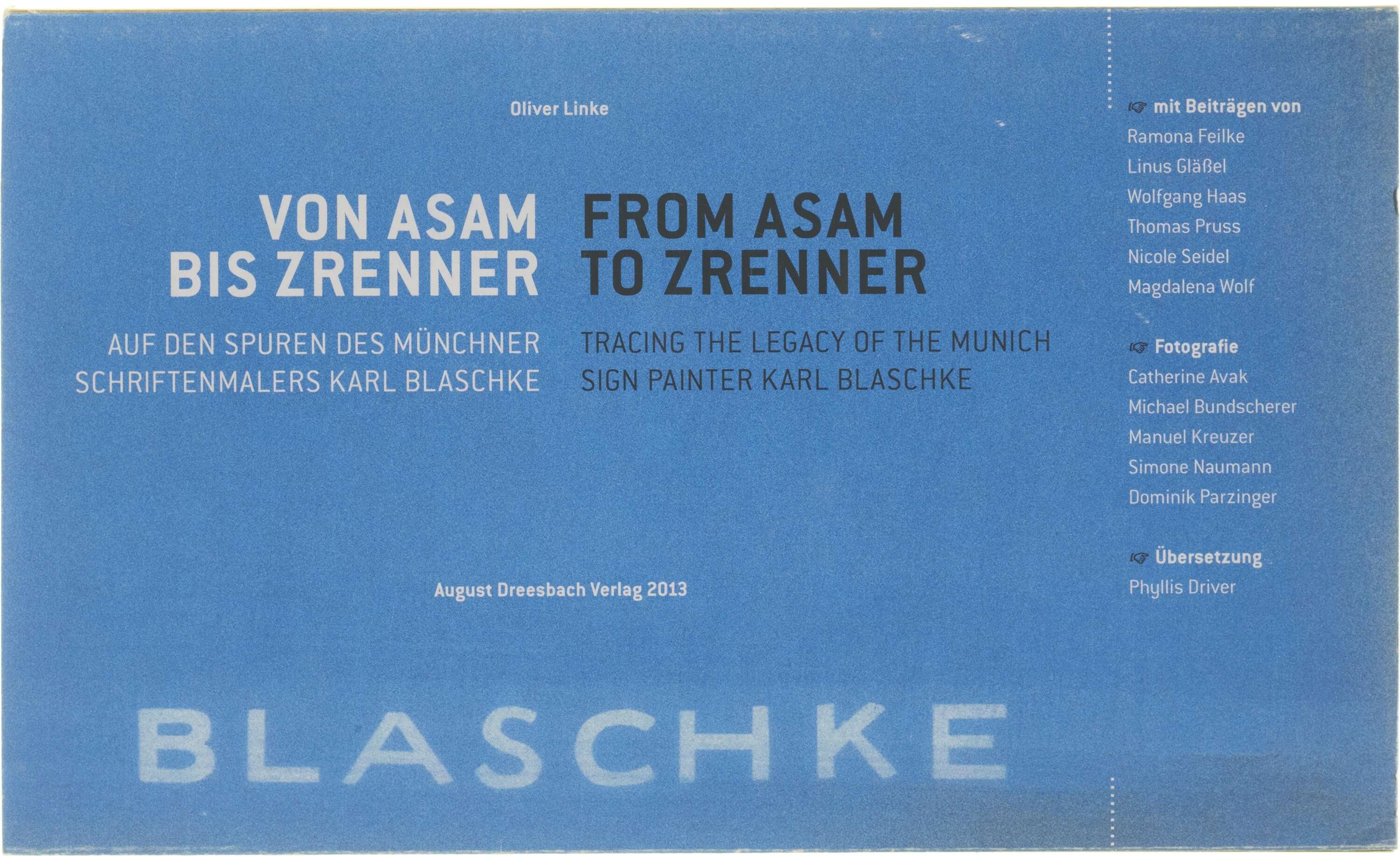
Our next book is focused not only on a place, but on a maker. Karl Blaschke was a prolific sign painter based in Munich. The book, by type designer Oliver Linke, documents and maps signs created by Blaschke and his firm. The photography shows work in a variety of materials, and every sign is signed. This mark of authorship works as a form of advertising, but also a mark of quality, and is not uncommon among sign painters, then and now. Next time you appreciate a sign, check for a signature! You might get to know your own city’s best sign makers.
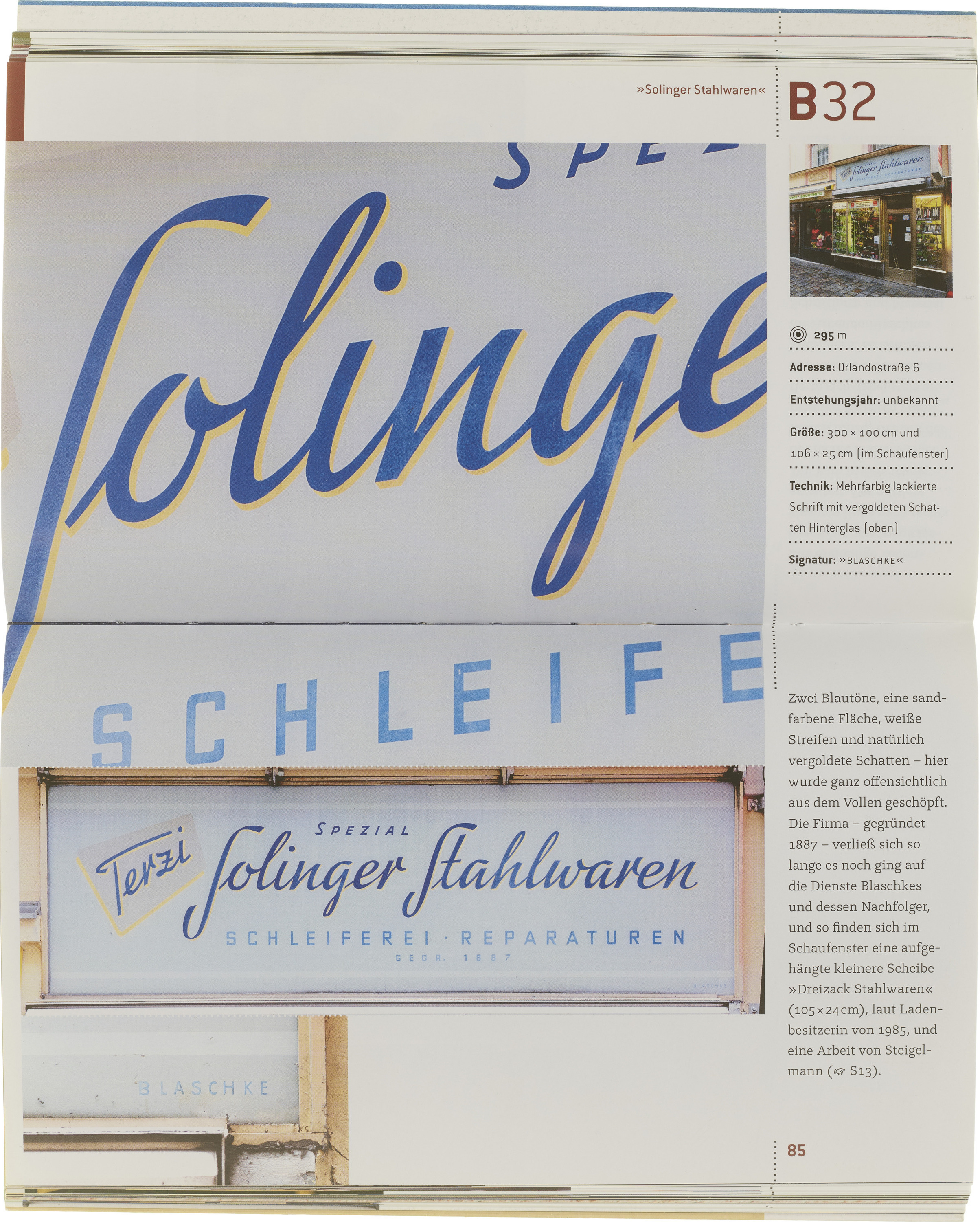
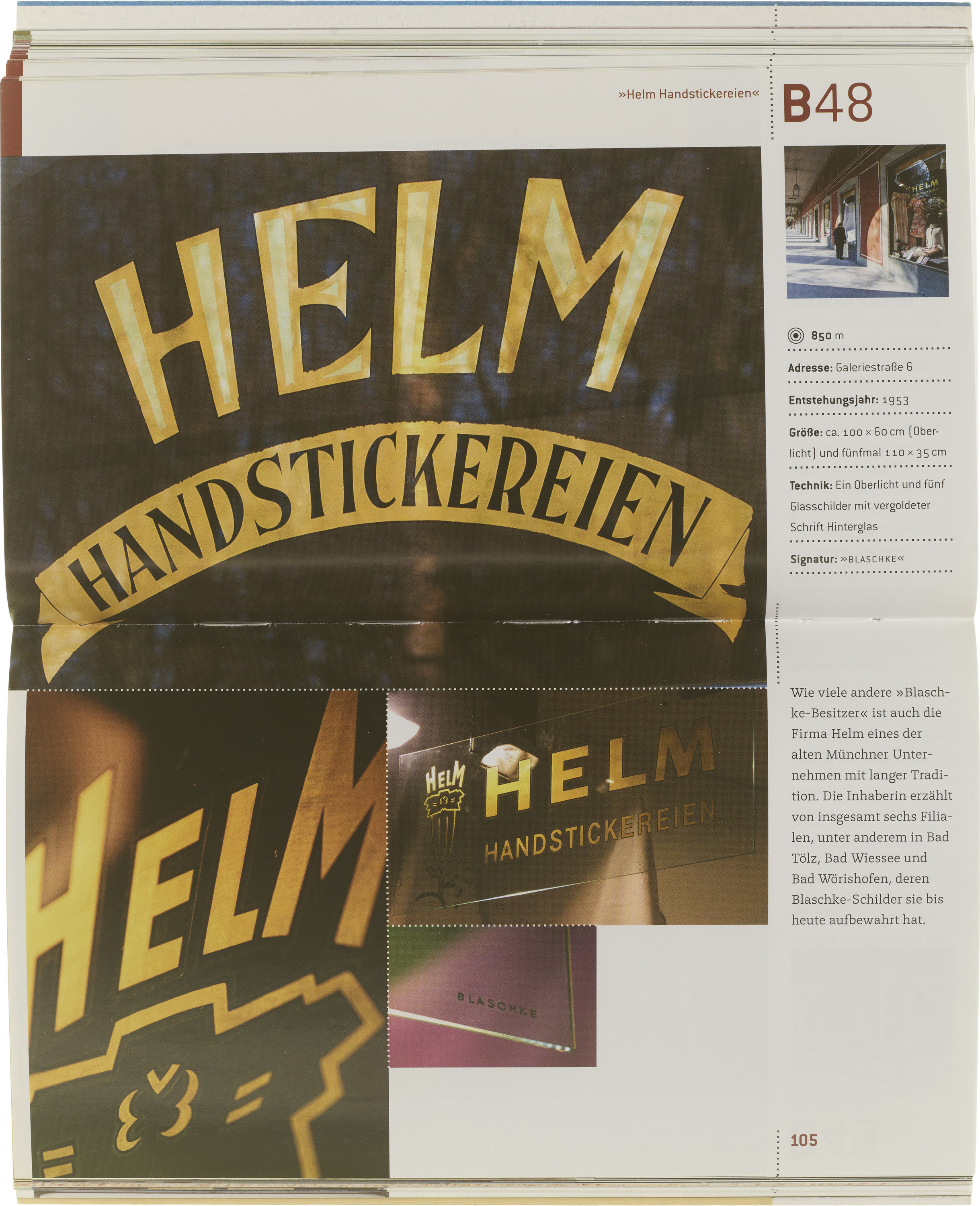
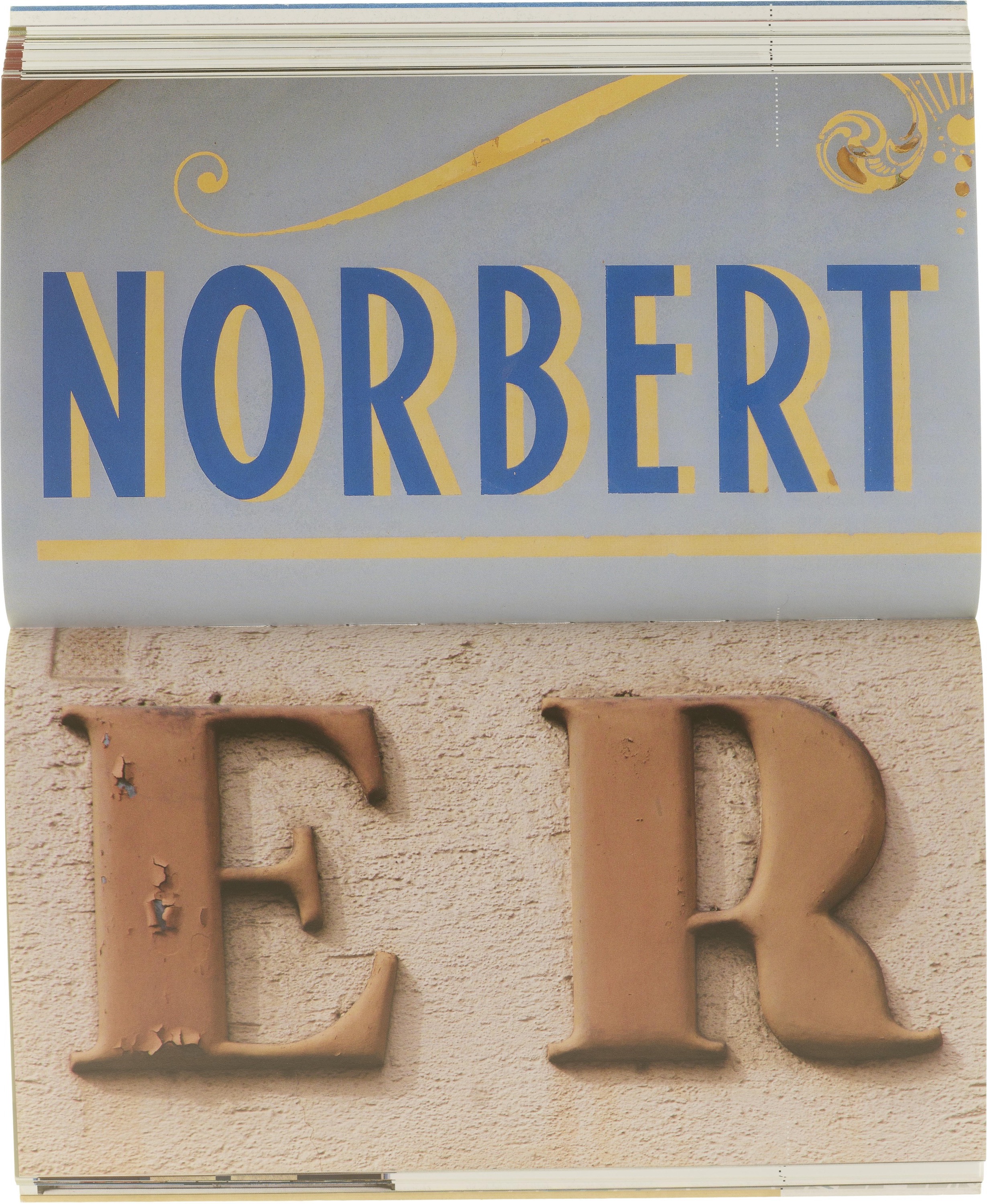
Store Front: The Disappearing Face of New York
James T. and Karla L. Murray, Gingko Press, 2010
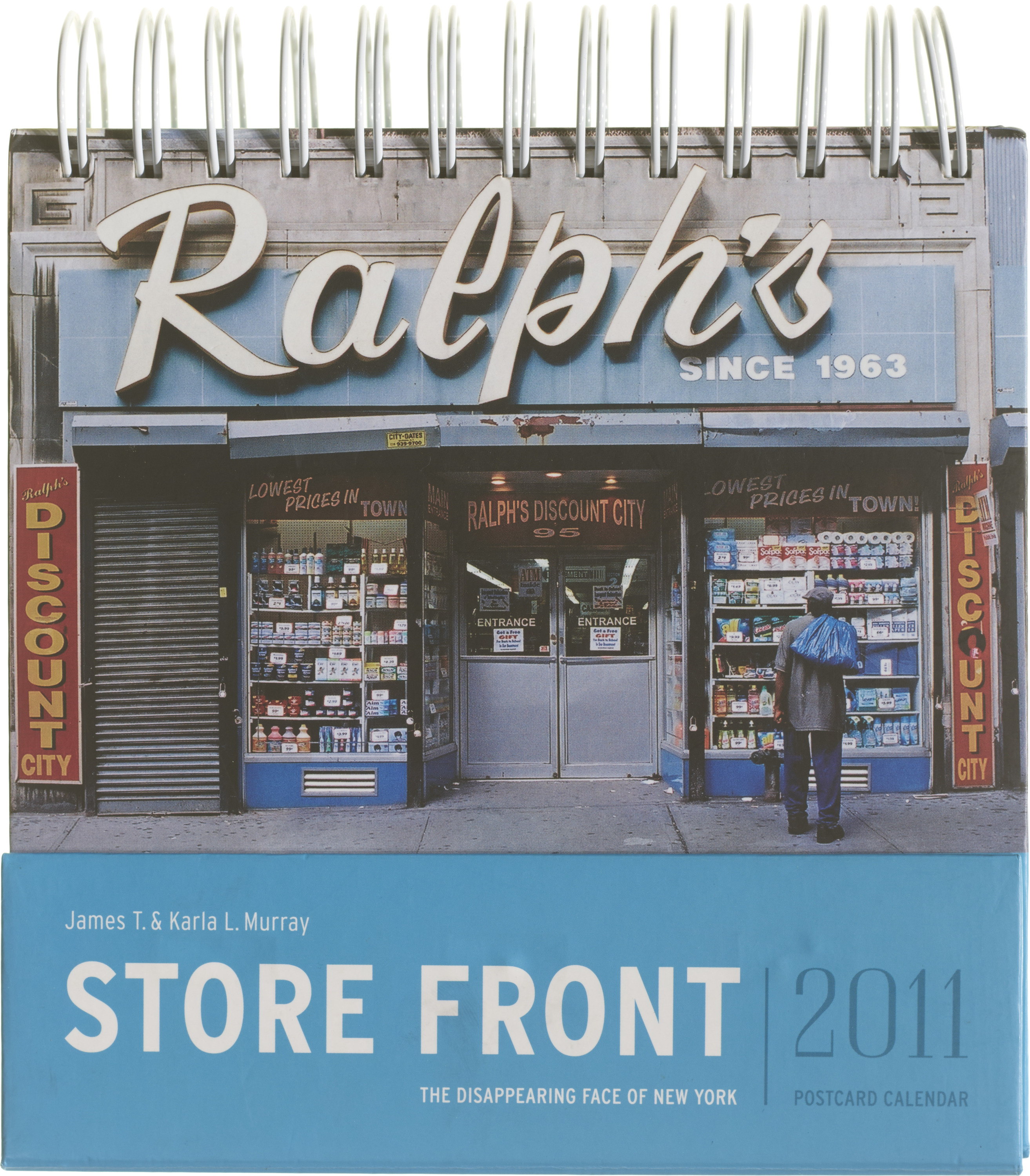
Starting in 2004, James T and Karla L. Murray began a project to capture the city’s unique mom-and-pop restaurants, shops, and bars before they were lost to gentrification. This isn’t an uncommon motivation among recent books, but this one was also published as a flip-through calendar with each week bringing you a postcard sized storefront that you can also tear out and post. I love that the calendar format allows you to interact with the images more frequently than a regular book on your shelf might.

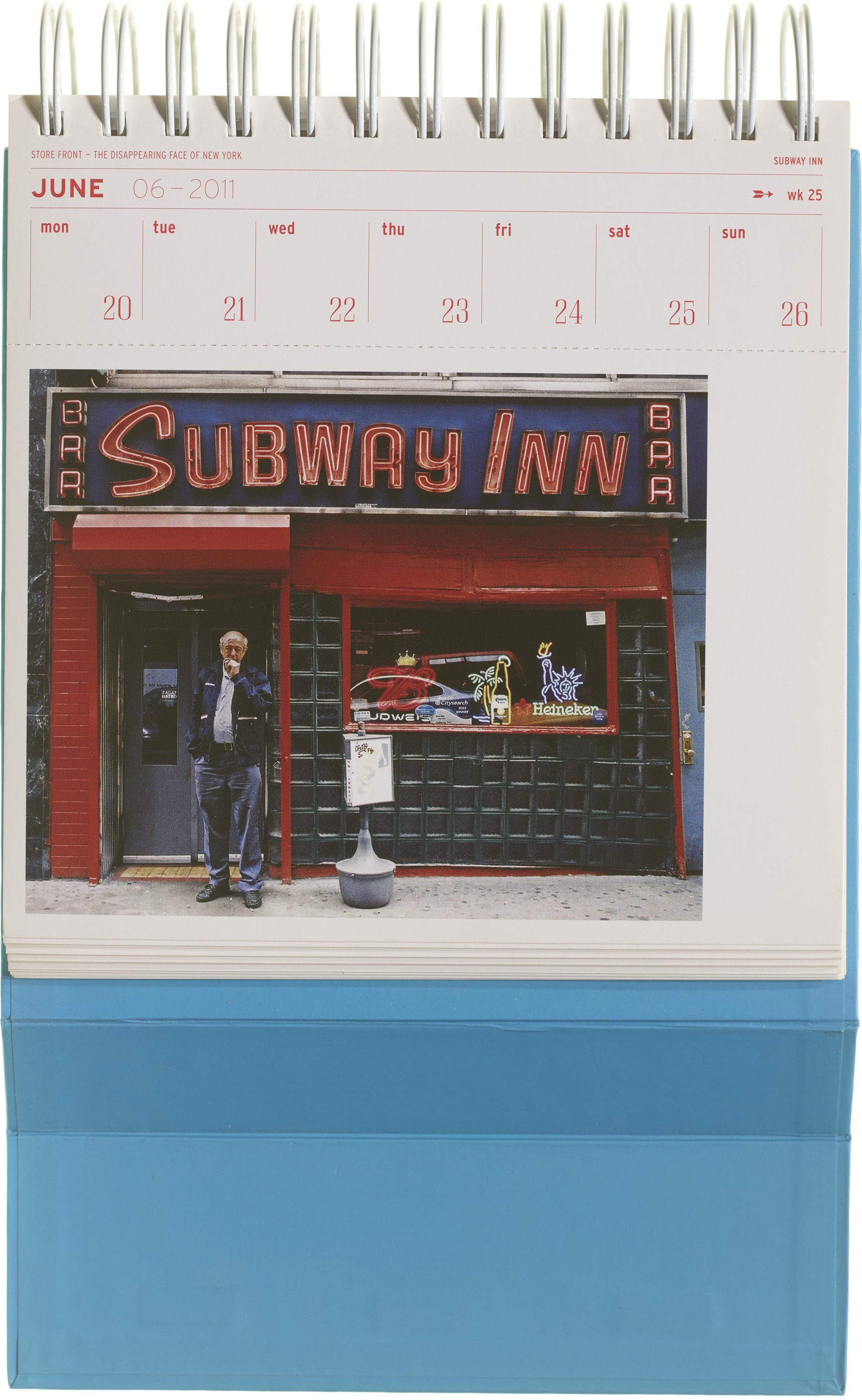
Cidade Gráfica – Letreiros e Reclames de Lisboa no Século XX
(City Graphics – Signs and Advertisements of Lisbon in the 20th Century), self-published, 2017
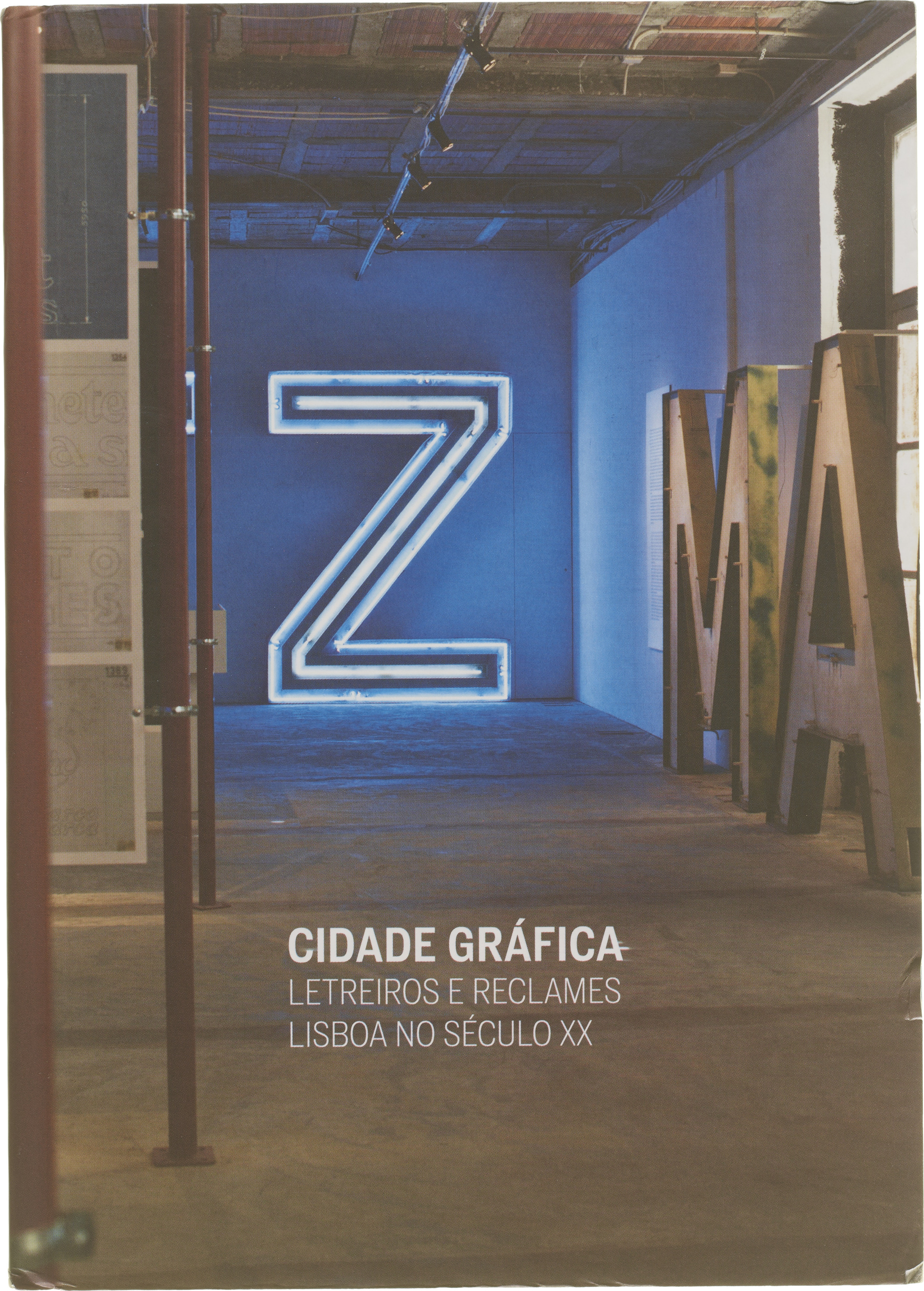
The book is an exhibition catalog for a 2017 show of the same name in Lisbon, where Rita Múrias and Paulo Barata saved dozens of discarded shop signs from around the city. Objects of glass, metal, and neon, salvaged from prominent establishments of Lisbon, are paired with technical drawings and other material to build historical context. With the help of the exhibition it sought to recognise the evolution of urban spaces. Múrias and Barata continue the work of encapsulating Lisbon’s letterscape, and hope to someday open a museum where their rescues can be permanently exhibited.
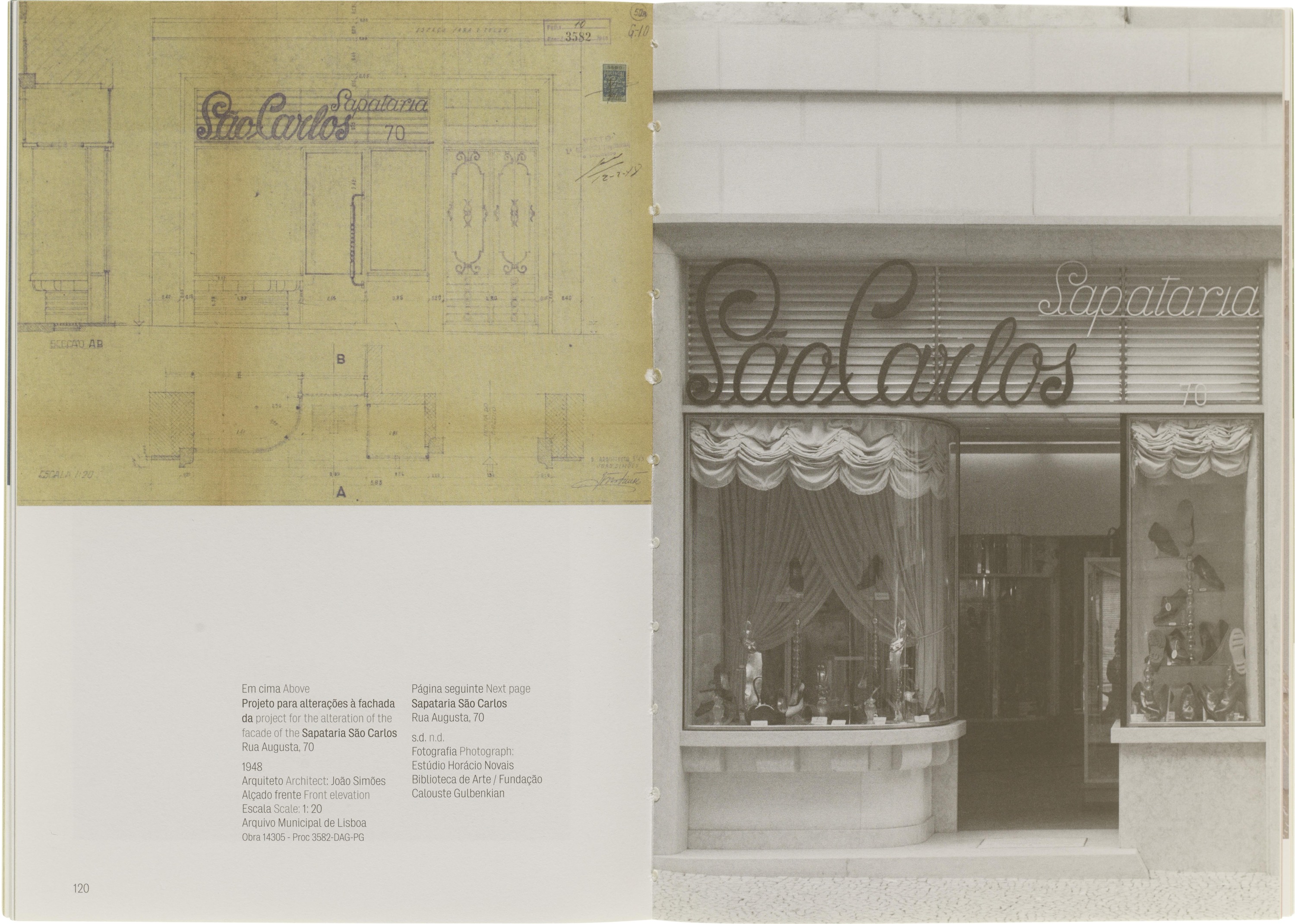
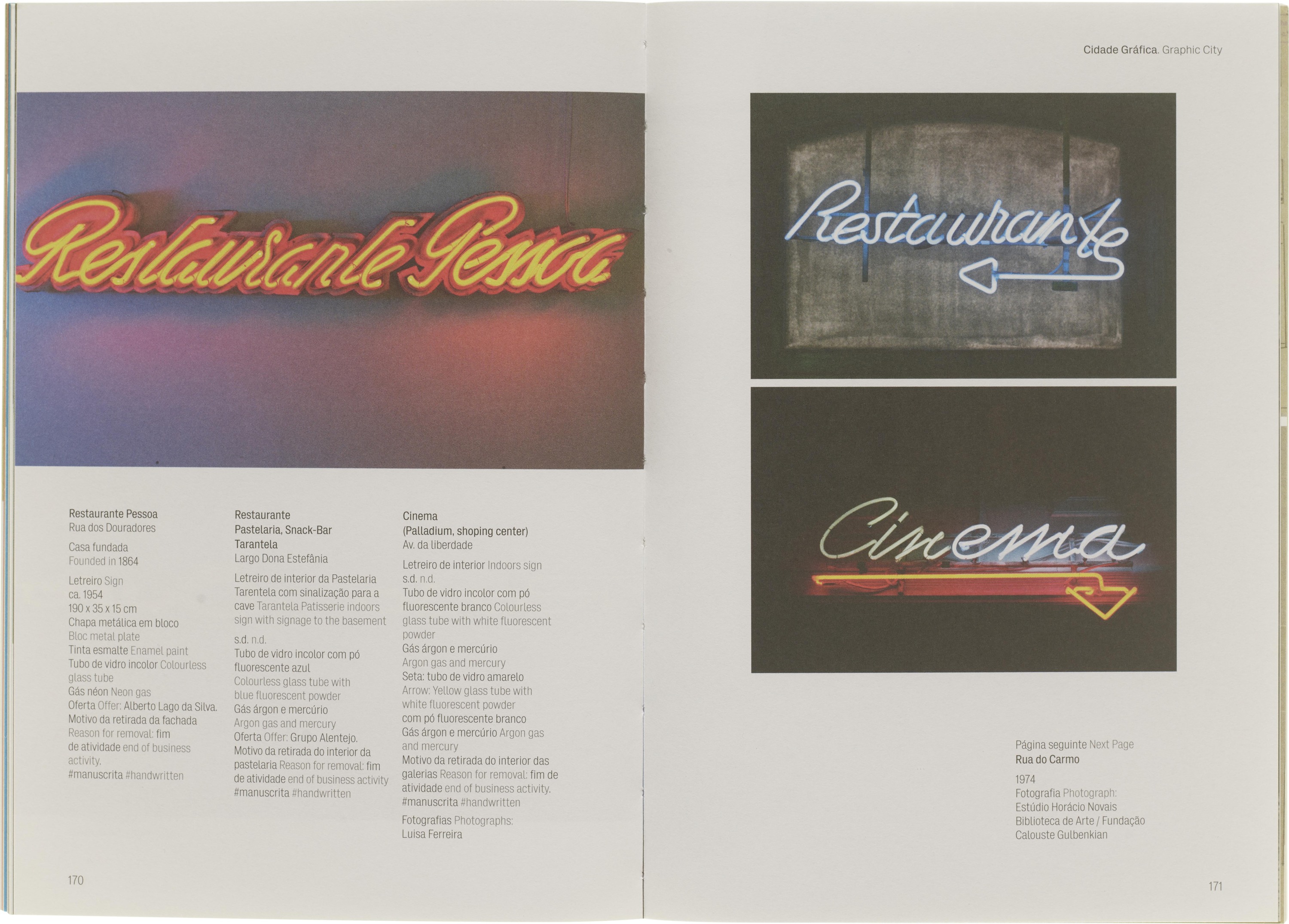
Bus Park Sign Shop
Matt Goias, MG Tropical Projects, 2018
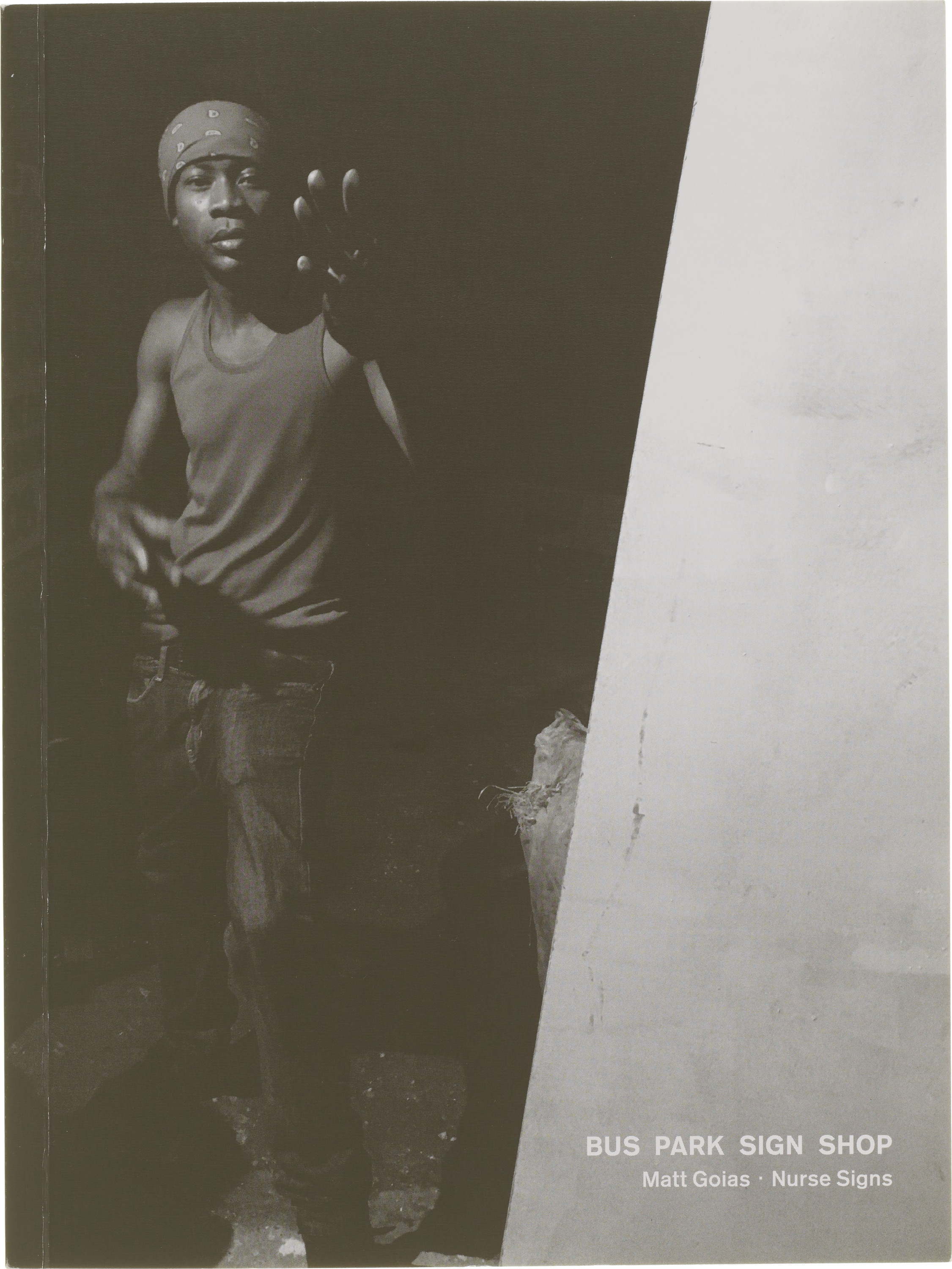
Matt Goias’s photography captures nighttime painting sessions at the Nurse Signs shop in Negril, Jamaica. Featuring the sign painter Cleark “Nurse” James Sr. at work, along with his expressive signboards, the pages wonderfully capture the energy of the space while also documenting his process. I was pleasantly surprised to find out that this book was not the first time I had encountered his work. Nurse was commissioned by John Legend to letter the the cover of Better Love, his last studio album!
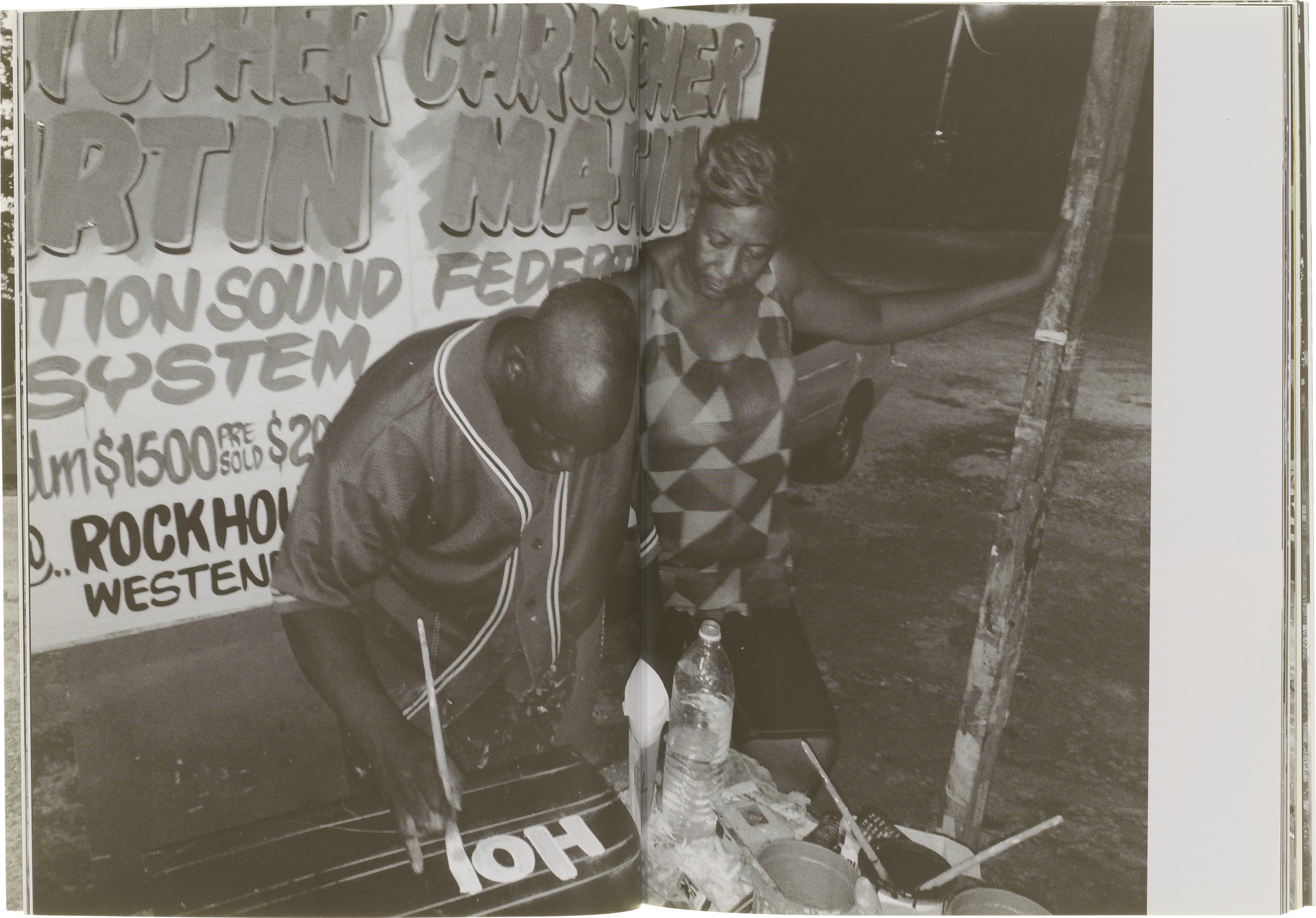
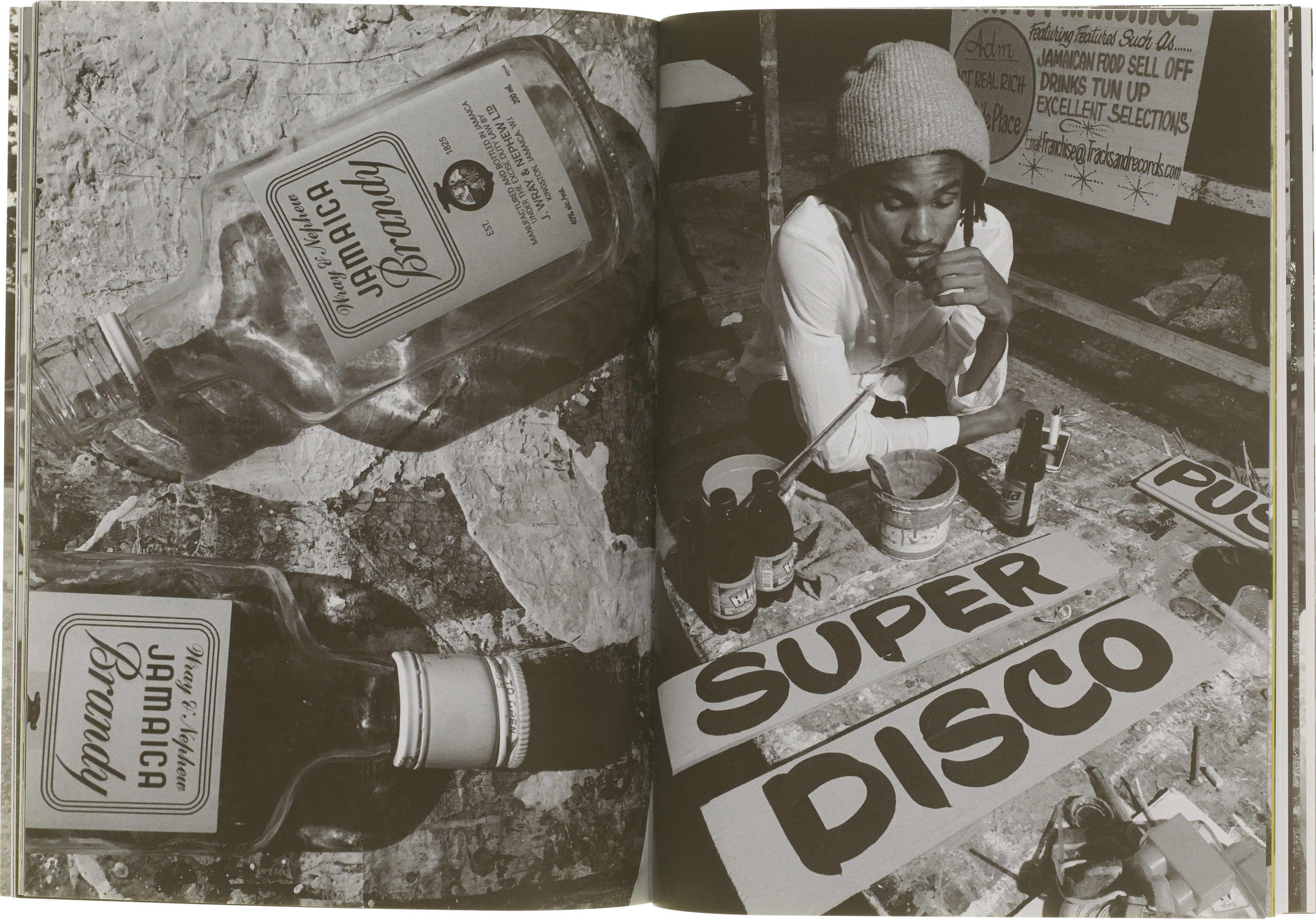
Schrift In Unseren Strassen
(Writing in Our Streets), Cordes Hauer, Volker Noth, Peter Sodemann, Dr. August Oberreuter, Harris-Intertype, 1969
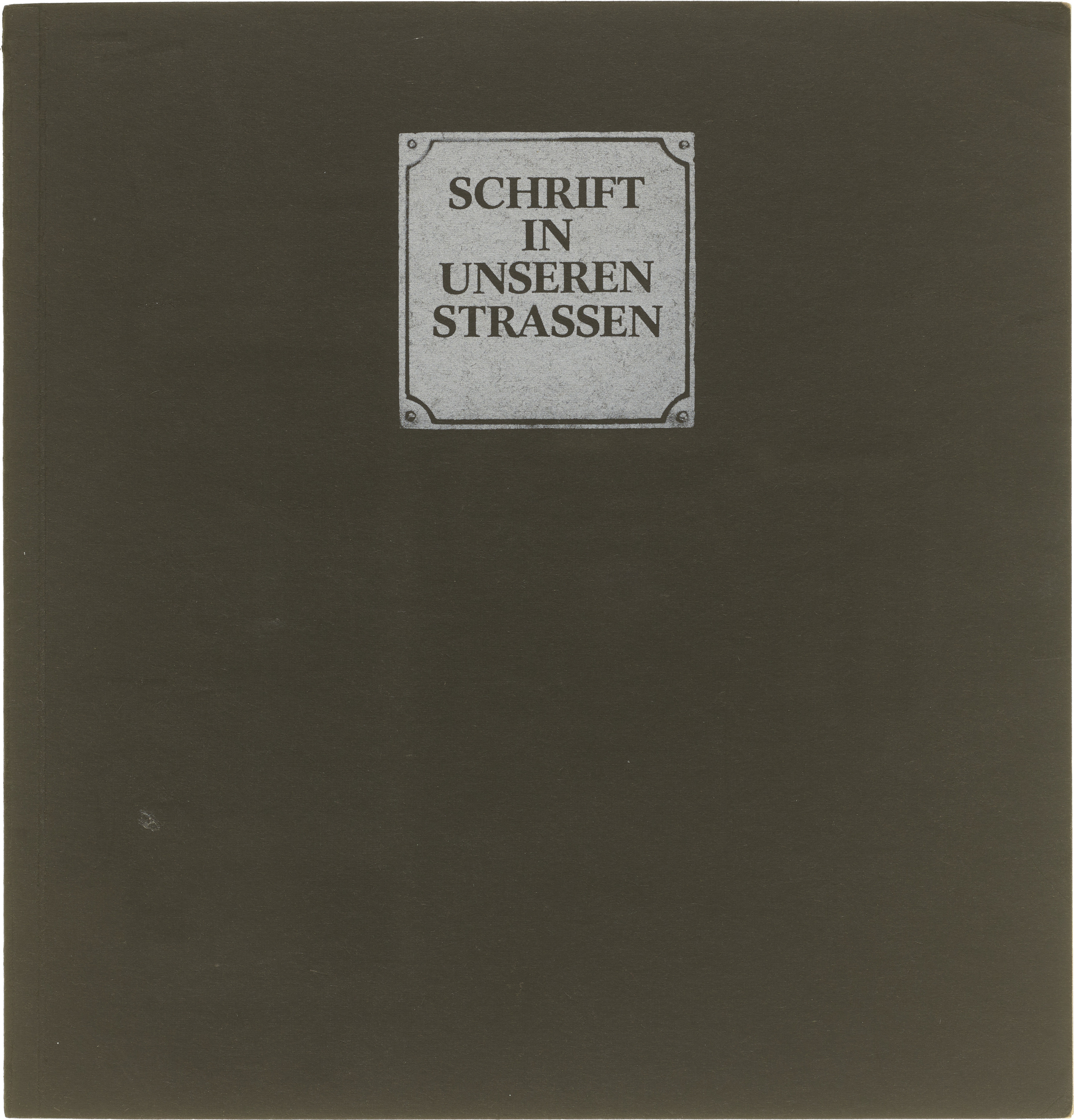
Published by Intertype, this book does exactly as advertised on the cover and indiscriminately records the urban letterscape of Berlin in the 1960s. Along with the usual suspects, such as building signs, street signs, and warning signs, we also see the ephemeral board nailed to a tree, unusual gravestone inscriptions, and even some graffiti.
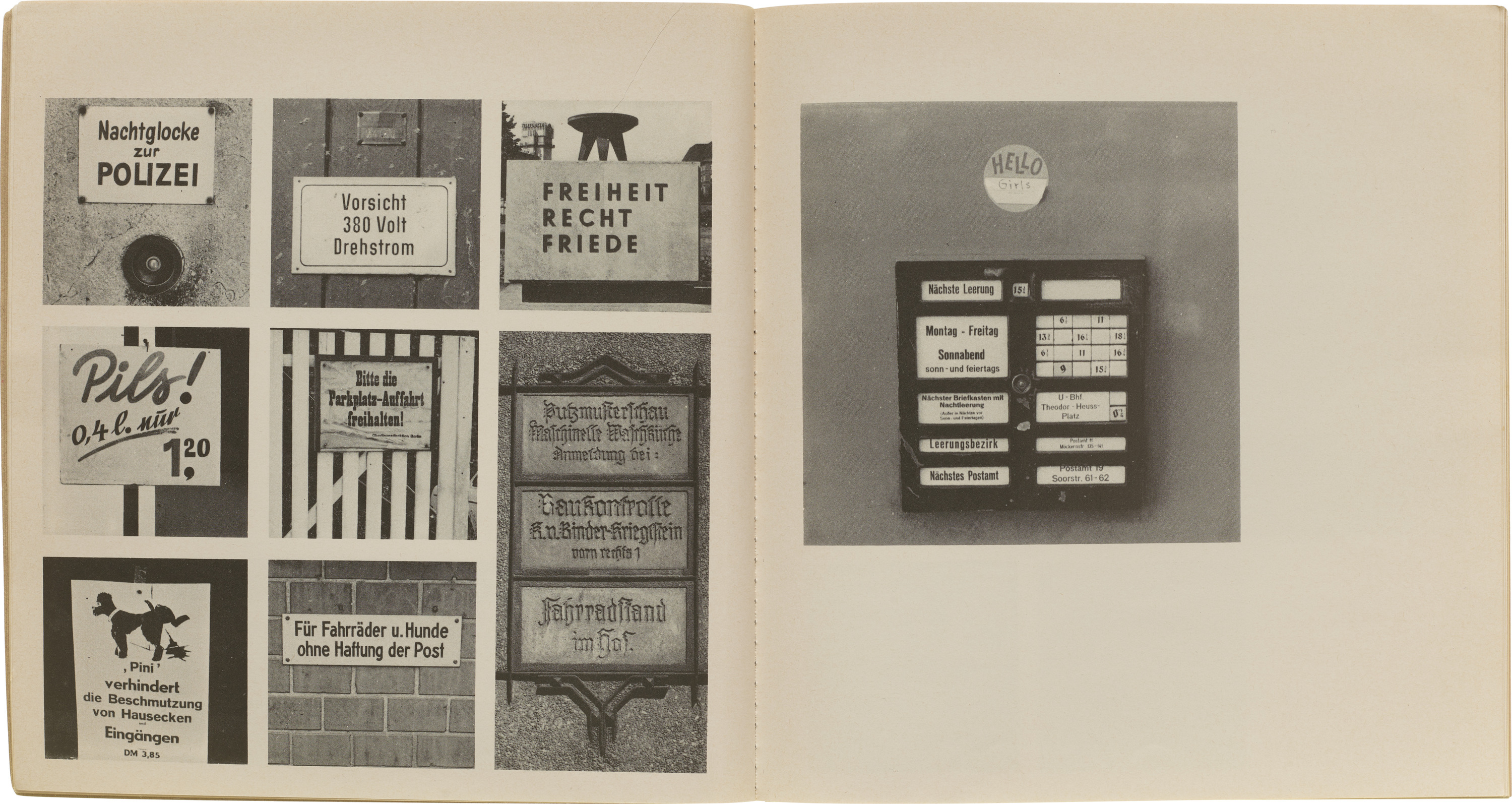

Die Schrift in der Baukunst
(Lettering in the Architecture of a Building), Georg Scheja and Eberhard Holscher, Heintz and Blanckertz, 1938
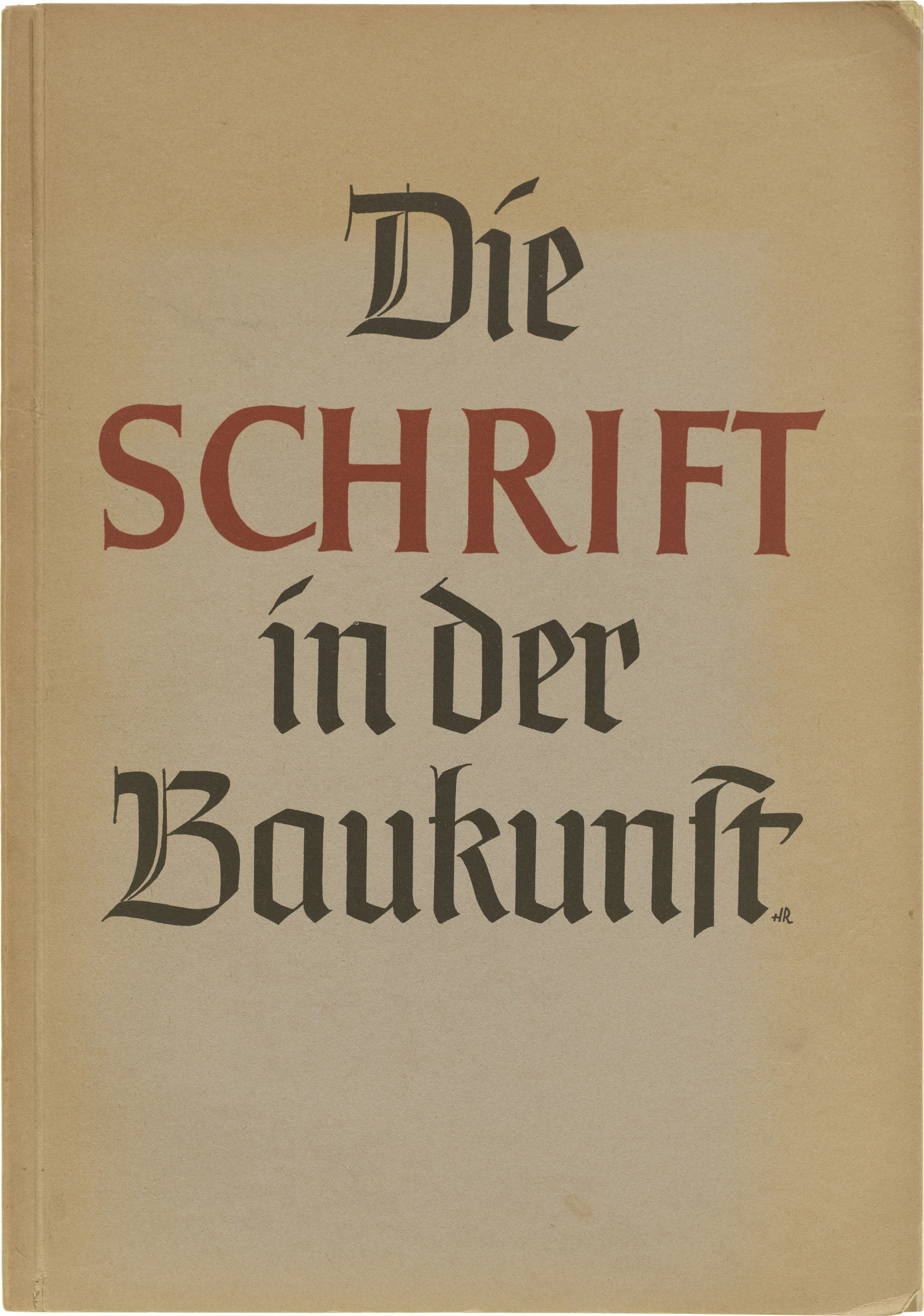
This book is one of the earliest comprehensive photographic surveys of signs. Georg Scheja and Eberhard Holscher document lettering applied to architecture. The black-and-white images and blackletter text reflect the time and place in which the book was published. As expected, readers should also be aware that Nazi messages and buildings are also prominent throughout, including Langemarckhalle, Hitler’s war memorial shown below.
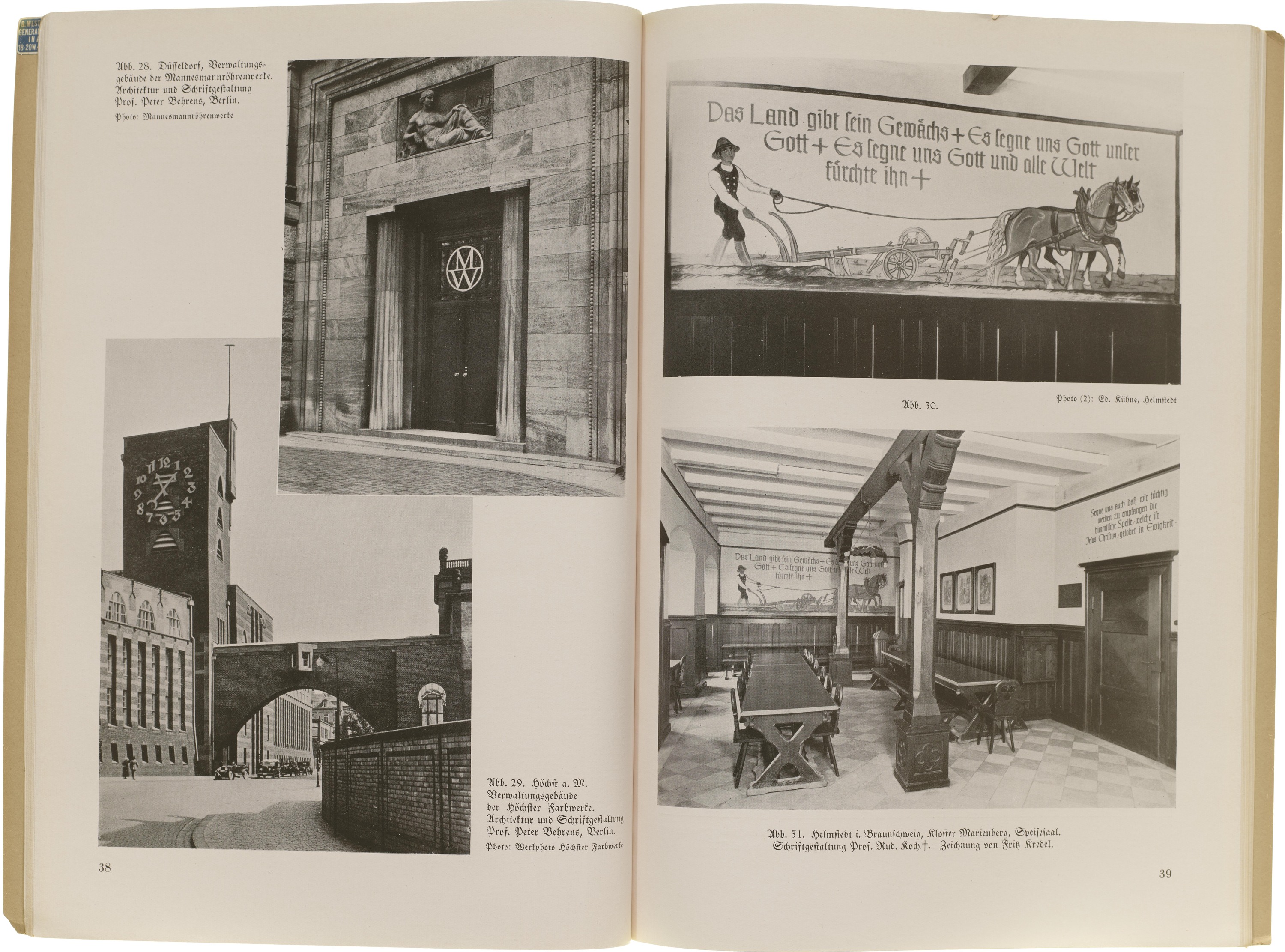
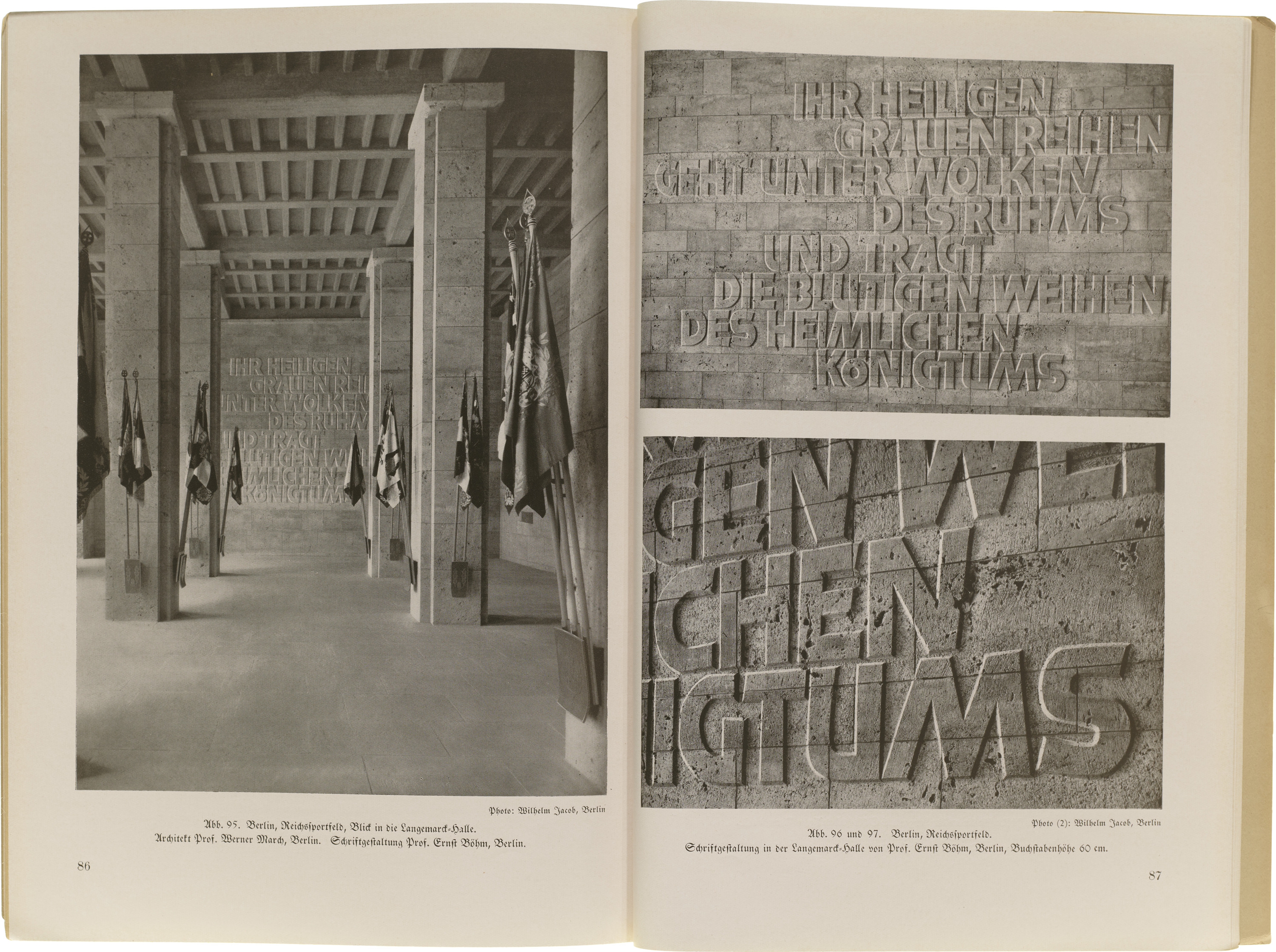
Designage, The Art of Decorative Signs
Arnold Schwartzman, Chronicle Books, 1998
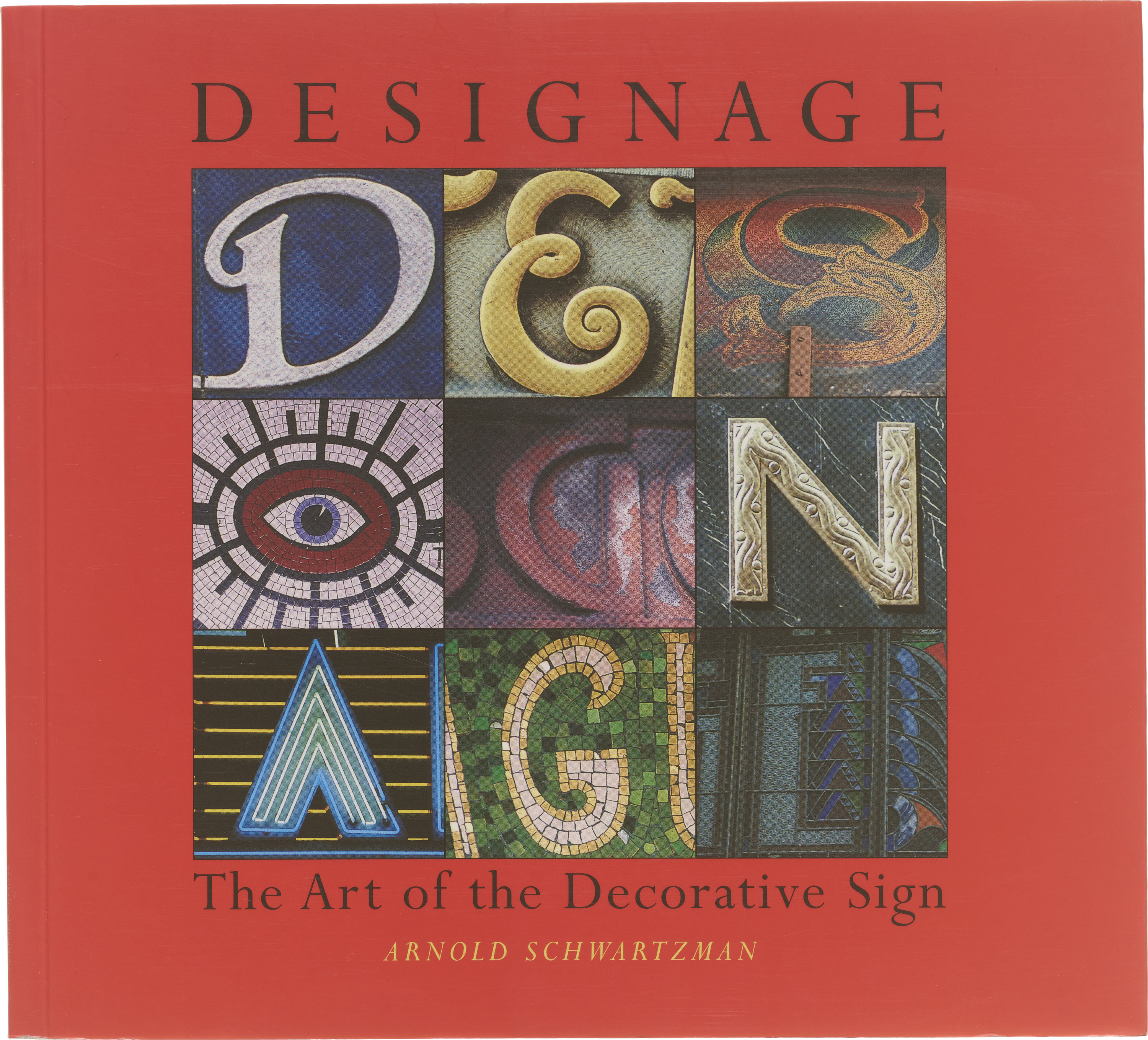
Arnold Schwartzman’s book offers a thorough overview of signs that also embellish the surface they appear on. The content is split into helpful sections by material — Mosaic, Metal, Glass & Neon, Paint & Wood, Tile & Brick, Stone & Brick — with plenty of photographs to illustrate each.
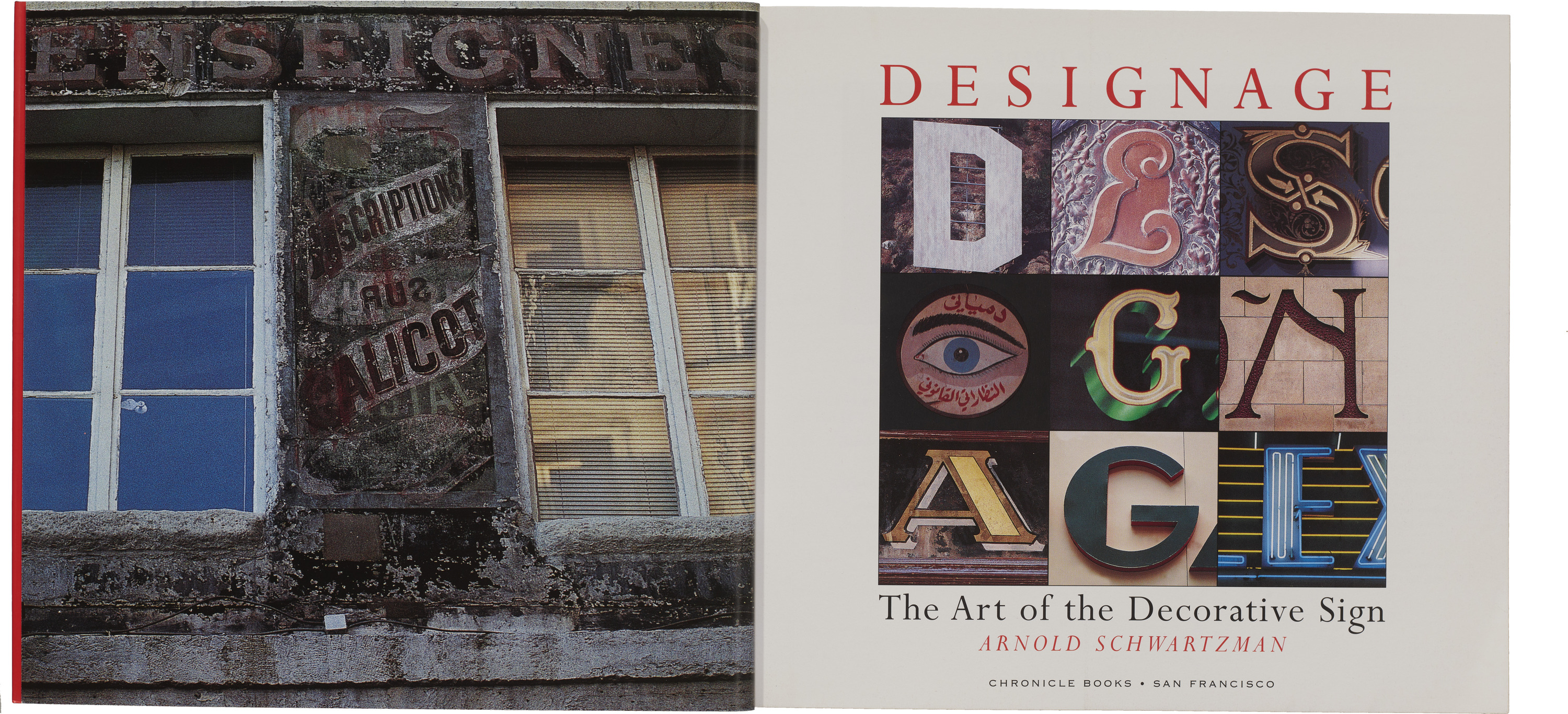
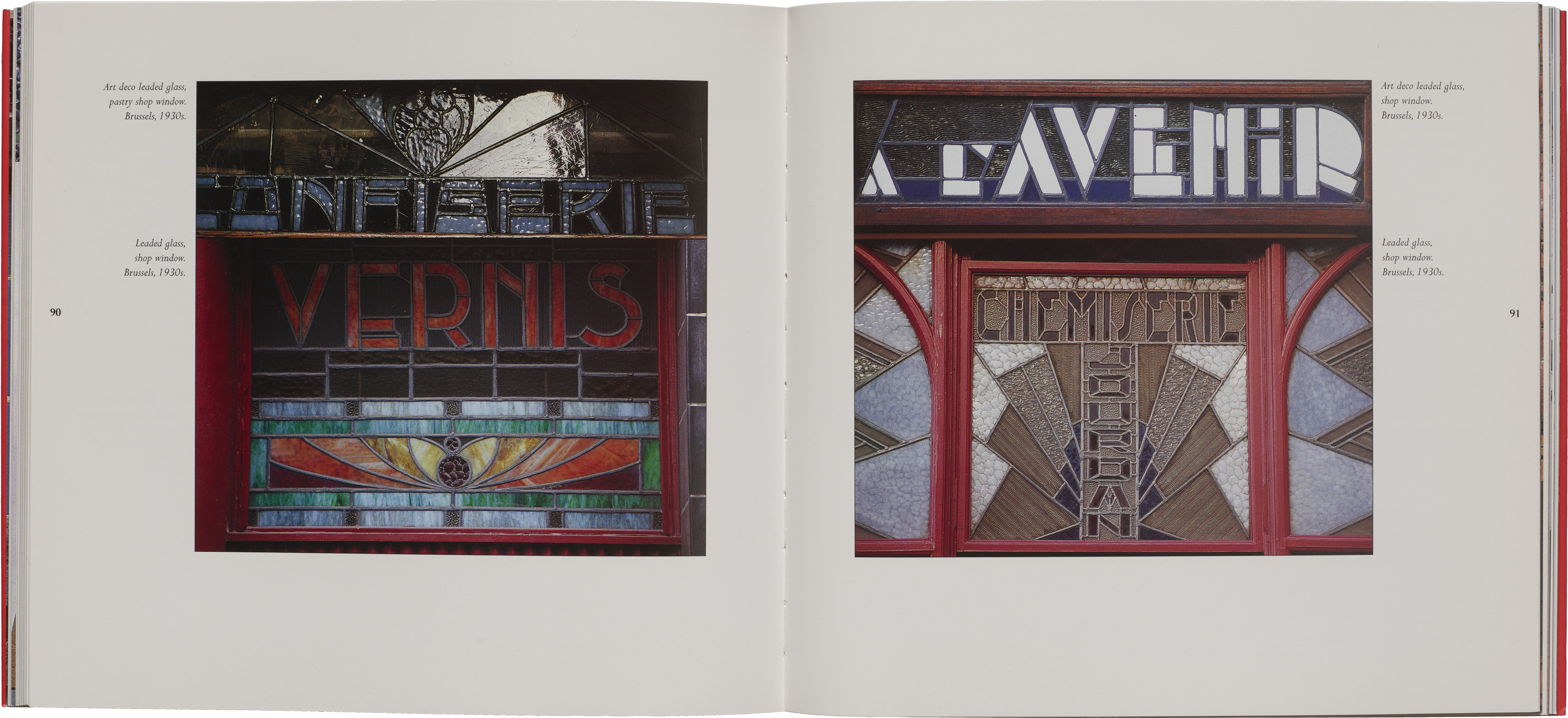
Hand-Painted signs of Kratie
Sam Roberts, Ghostsigns, 2012
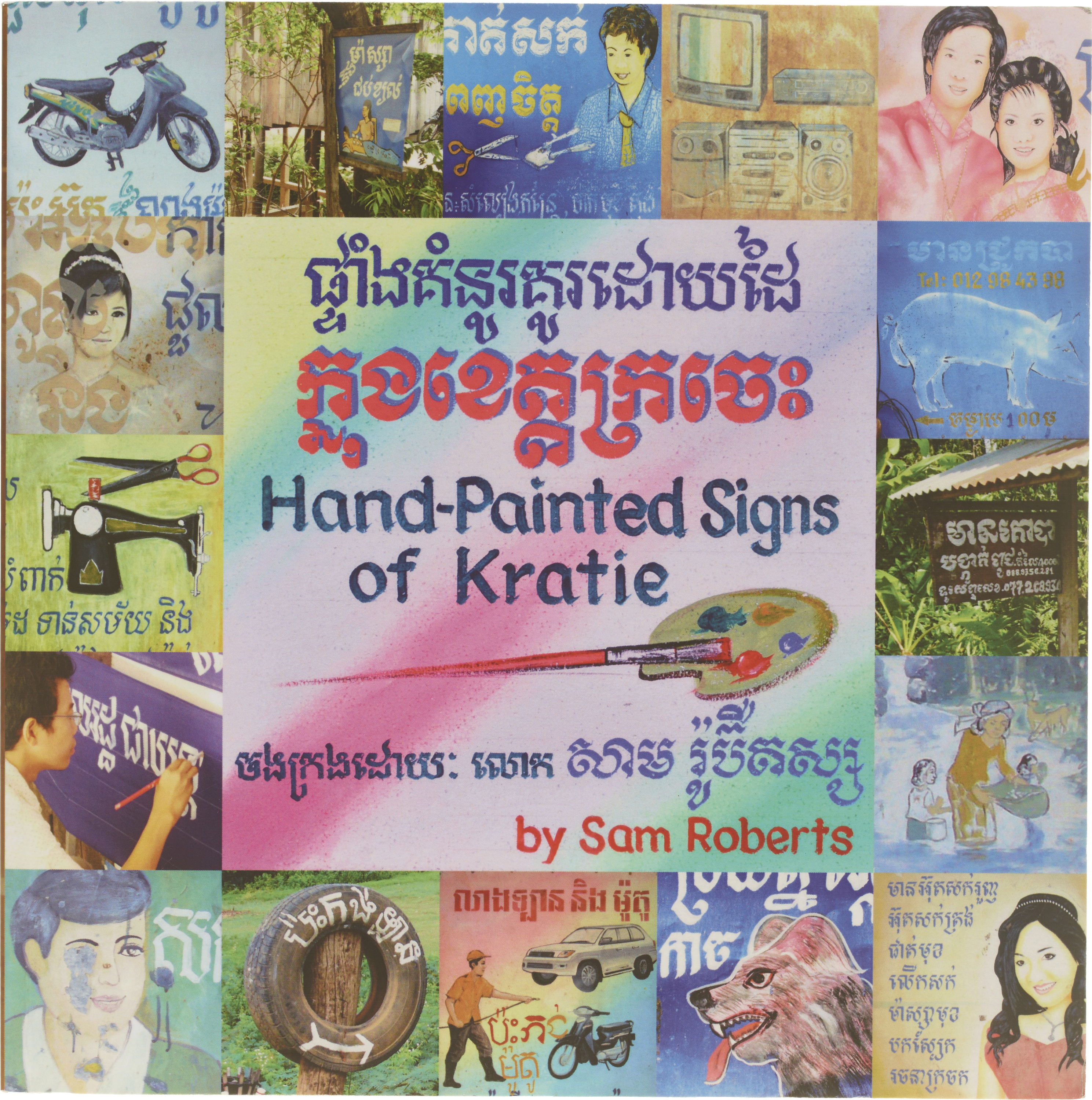
While the Archive’s reference library is dominated by books about Latin letterforms, the curators are focused on expanding script representation. Sam Roberts — who also co-authored a book about ghost signs in London — describes his book as an introduction to the signs of a northeastern Cambodian province and the people who paint them. Roberts uses the artform to explore the country’s art, culture, and history. The cover art is by Sai Sokheang, considered one of Kratié’s most sought-after signmakers, whose work is also heavily featured in the book. A companion website offers a free eBook version as well as a Khmer translation of the text.
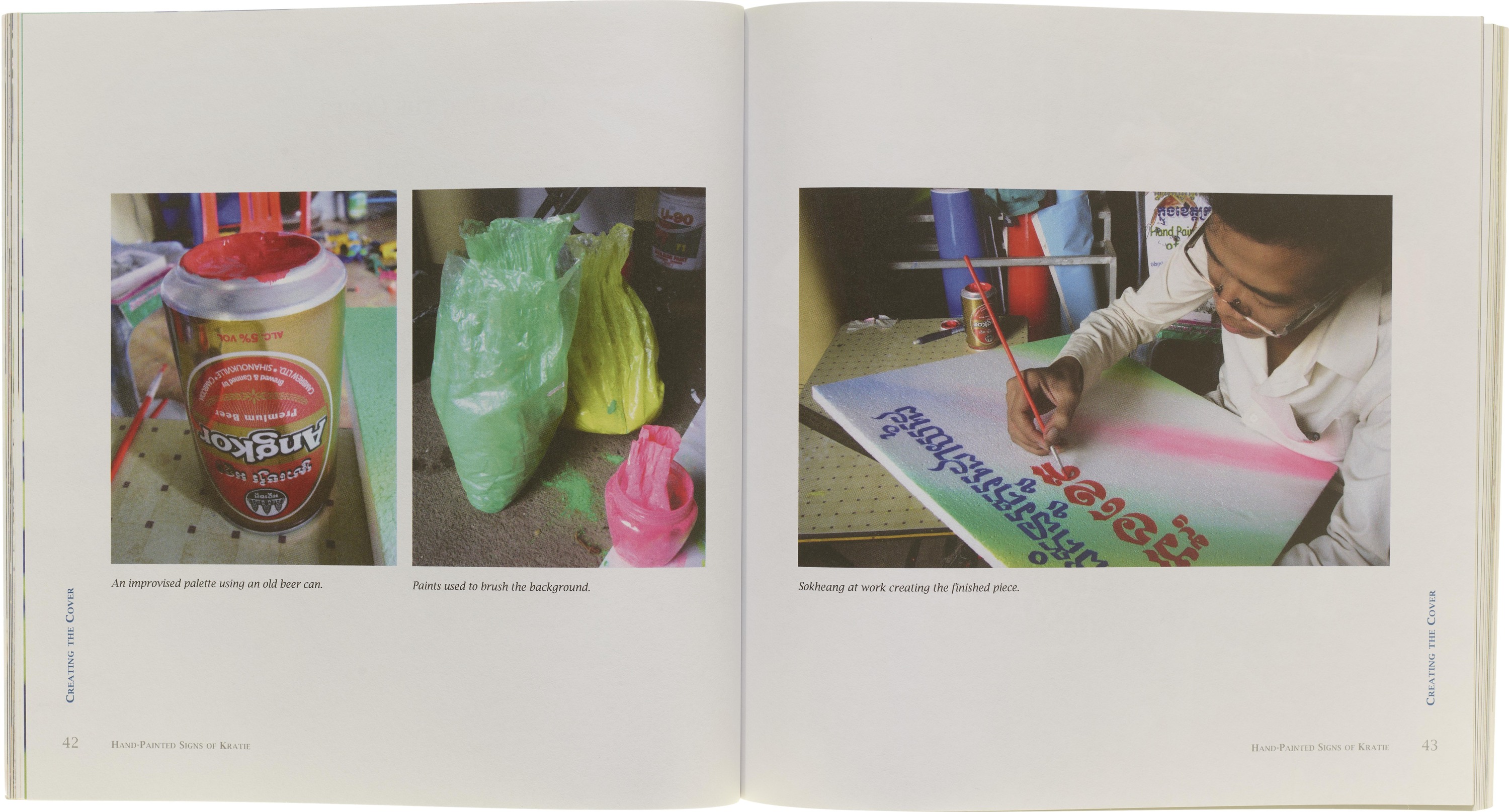

Lettering in Architecture
Alan Bartram, Lund Humphries Publishers Ltd., 1975
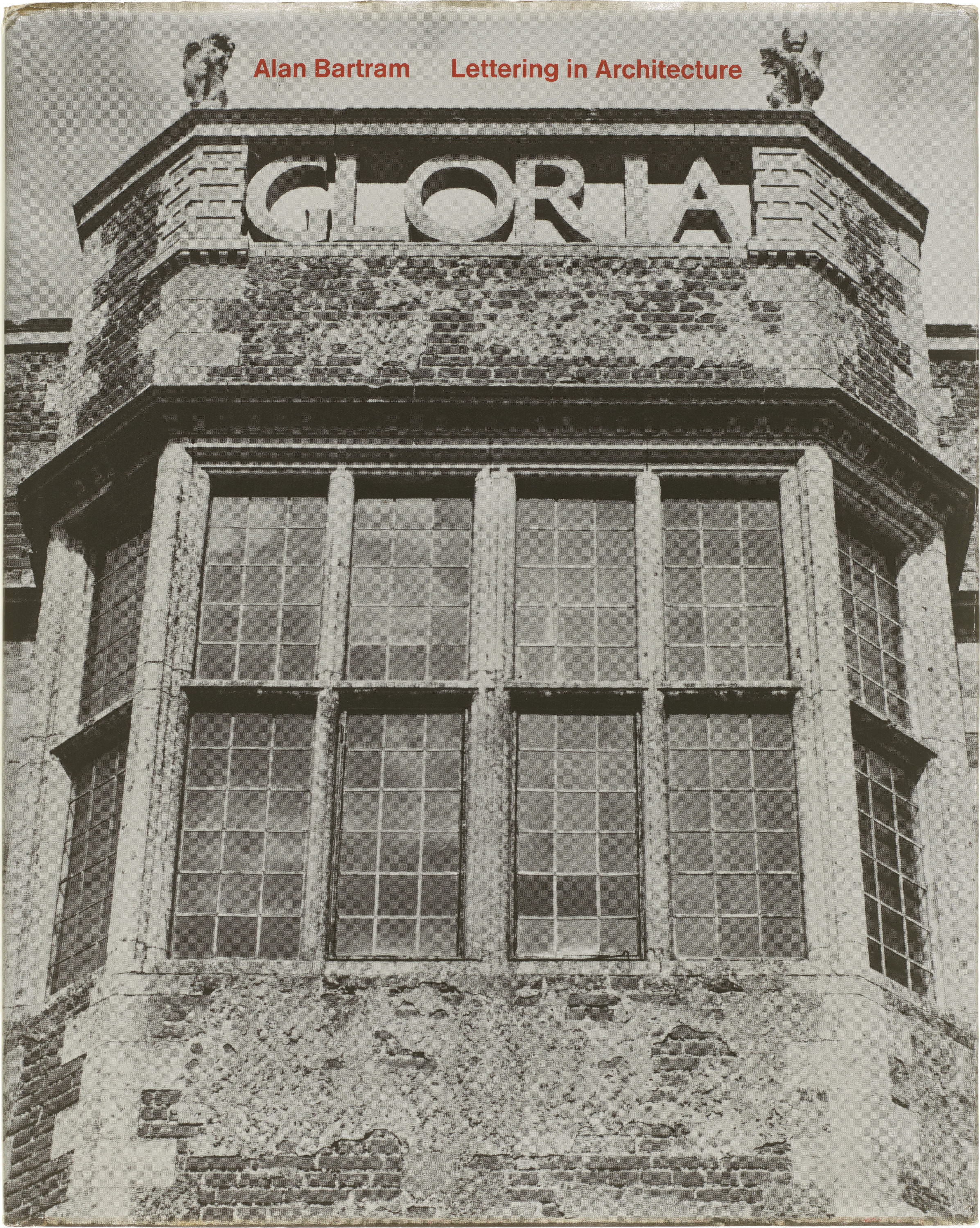
The Archive has quite a few books by British graphic designer and historian Alan Bartram, including his 1970s series on Street Names, Lettering, Tombstones, and Fascia. Also in the reference collection is Lettering in Architecture, which delves into the visual nature of permanent letterforms, with a focus on England and Italy.

Schrift Zeichen am Bau
(Writing and Signs on Buildings) Hans-Jürgen Meier-Menzel, Callwey Verlag, 1961

Published in Munich, Schrift Zeichen am Bau catalogs advertising on building facades and shop windows using painted and otherwise handmade letters. It also includes freestanding advertising media and signs found on fences and construction sites. The book is filled with well-reproduced black-and-white images. Unfortunately, despite the title and the promising diagrams on the cover, most of the signs are isolated from the buildings on which they appear.
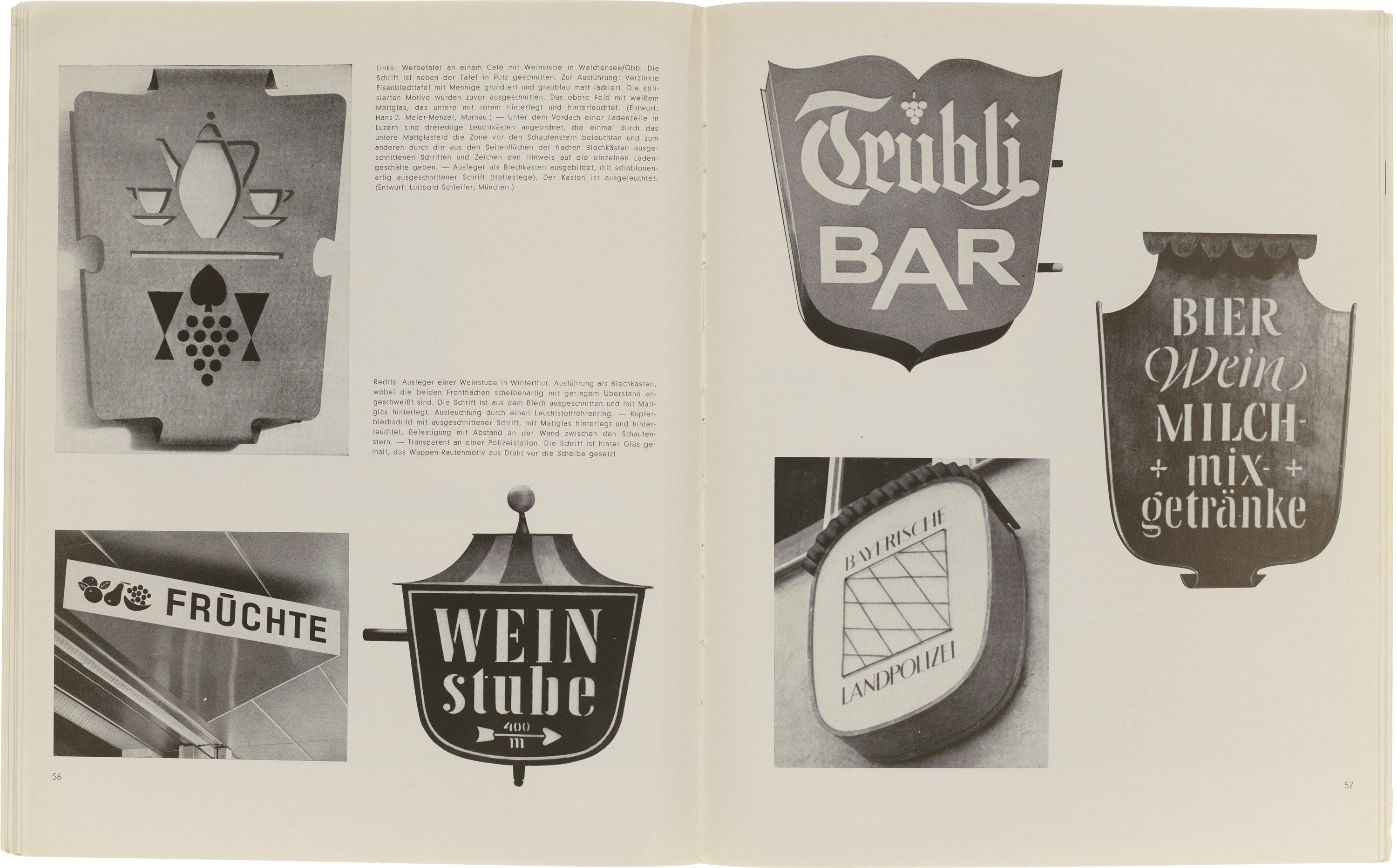
Signs and Artifacts
Gonzalo Guerrero, Secret Riso Club, 2022
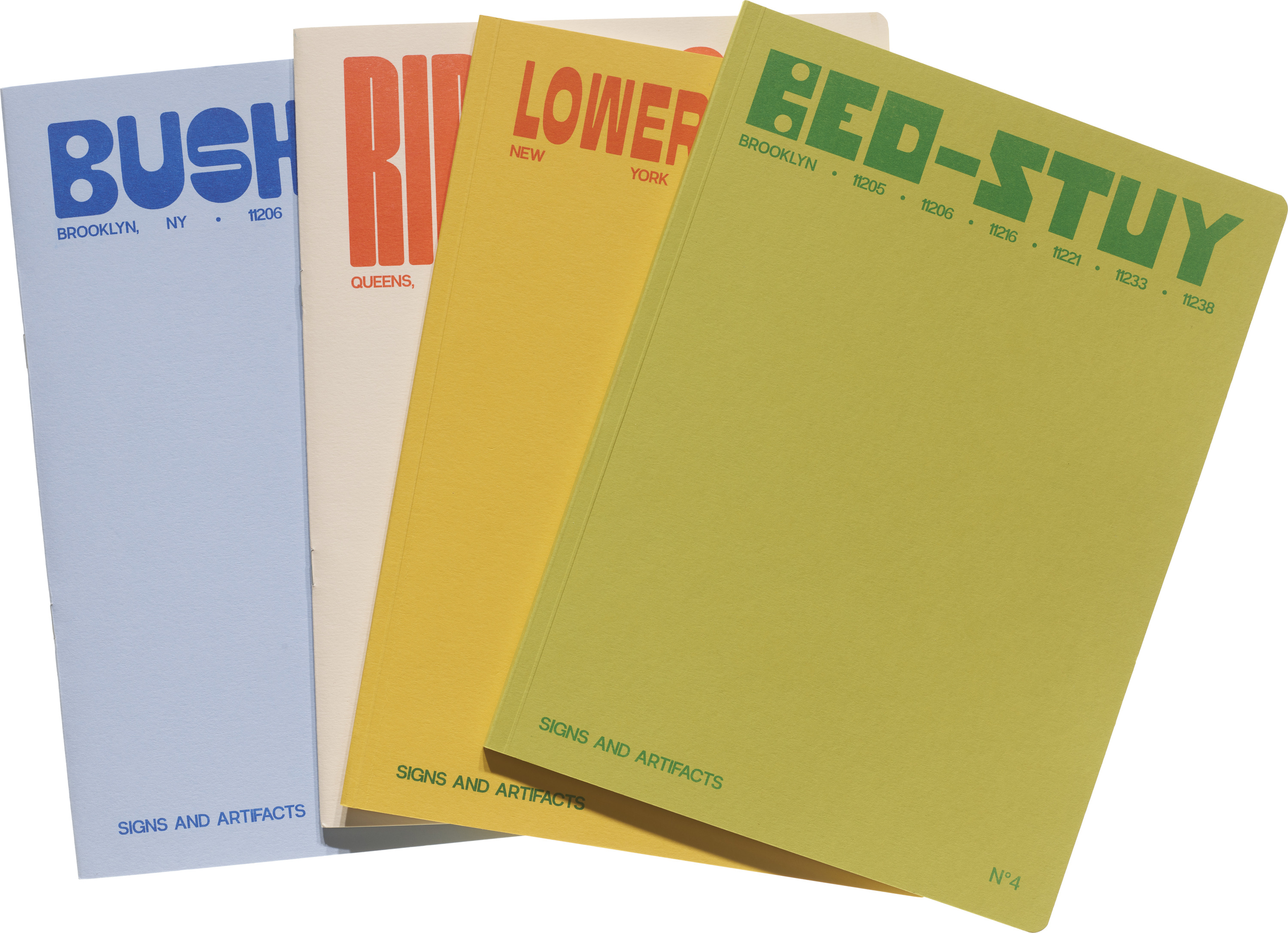
Vivian Sming, Letterform Archive’s 2022 Curatorial Fellow, recently added to the collection a set of riso-printed zines called Signs and Artifacts. As a novel way to appreciate the vernacular letters of small businesses in New York, Gonzalo Guerrero vectorized dozens of signs across four neighborhoods — Ridgewood, Lower East Side, Bushwick, Bed-Stuy — and printed them in a single color for each book.
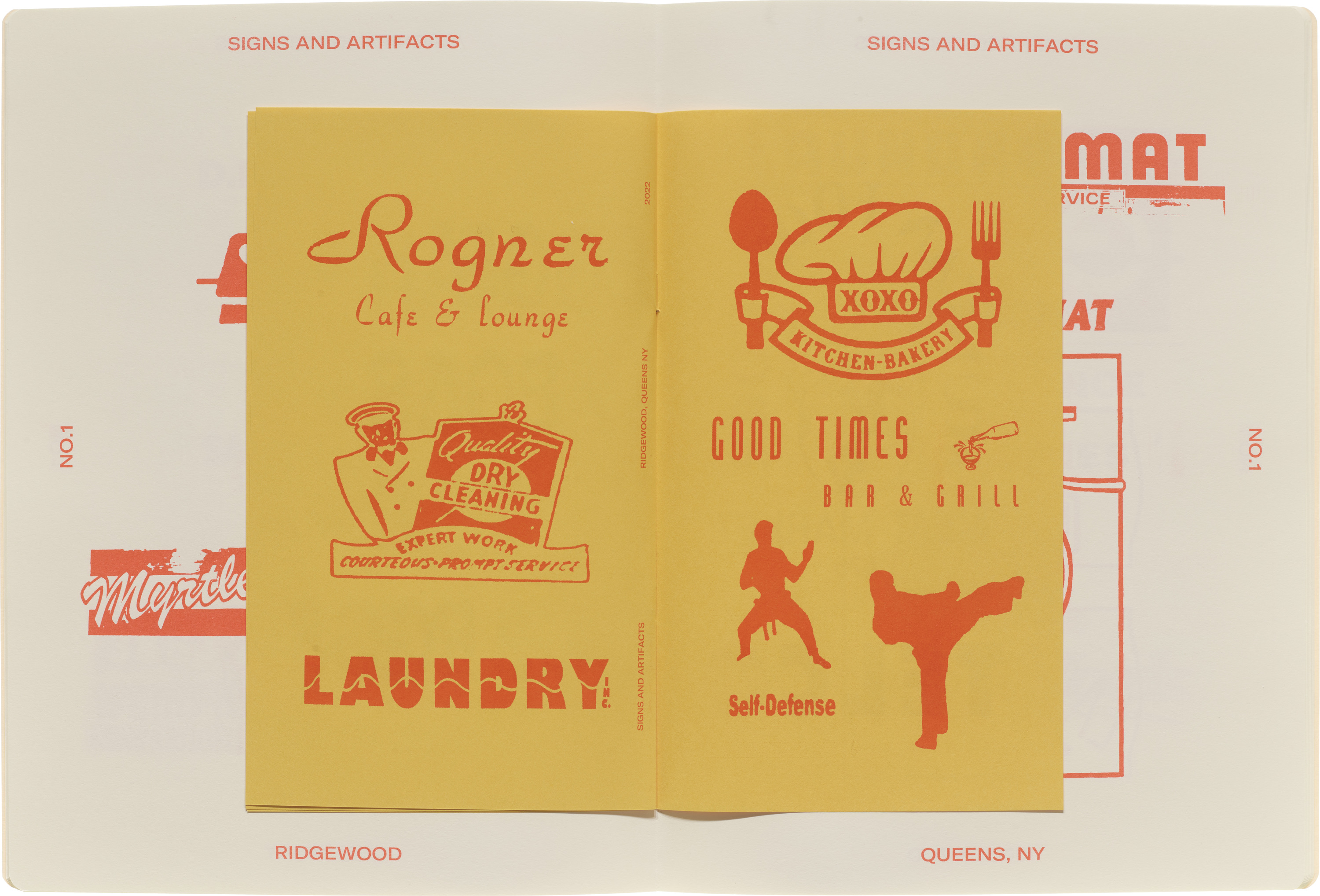
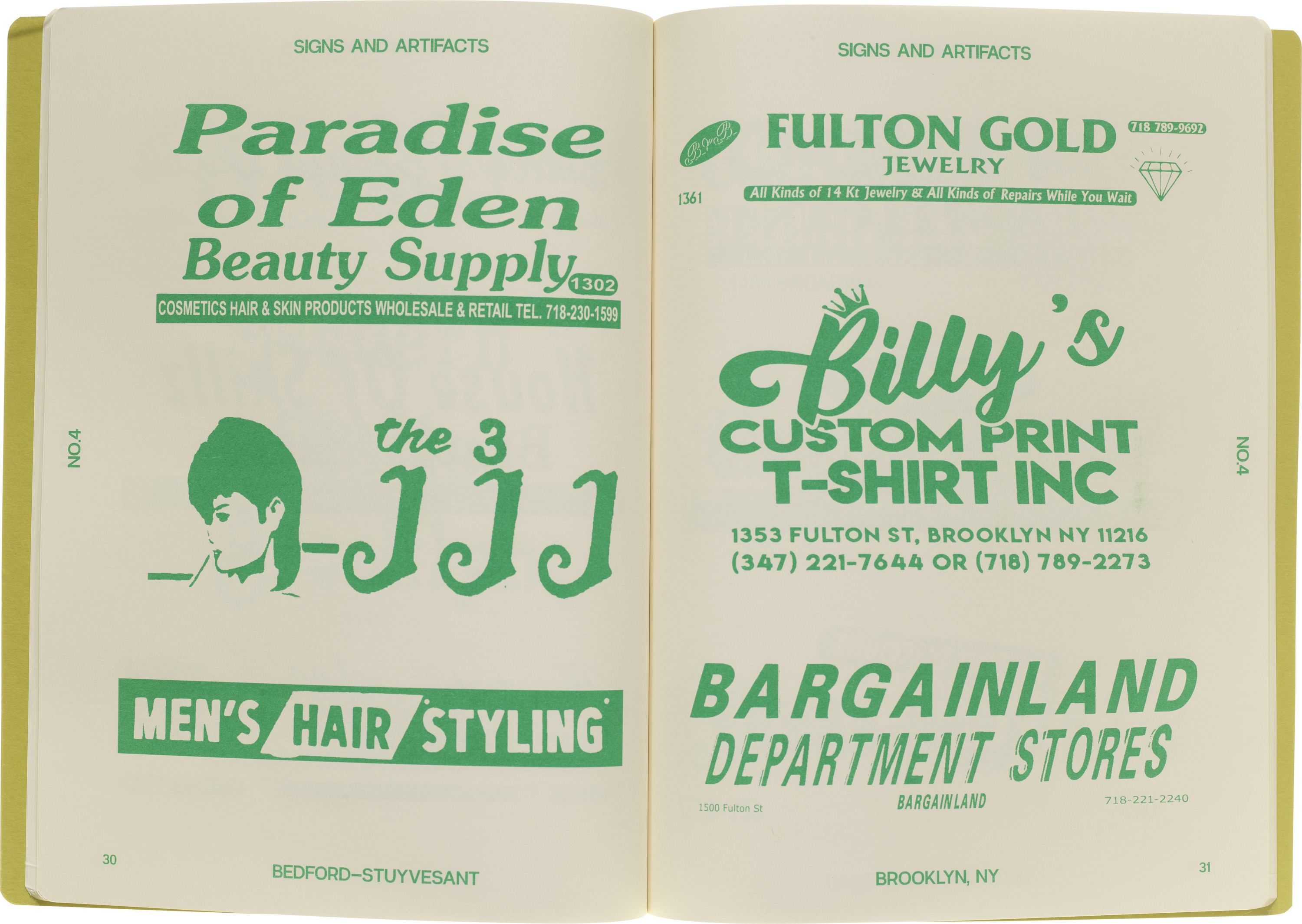

Sign language for buildings and landscapes
Mildred Constantine and Egebert Jacobsen, Reinhold Publishing Corporation, 1961
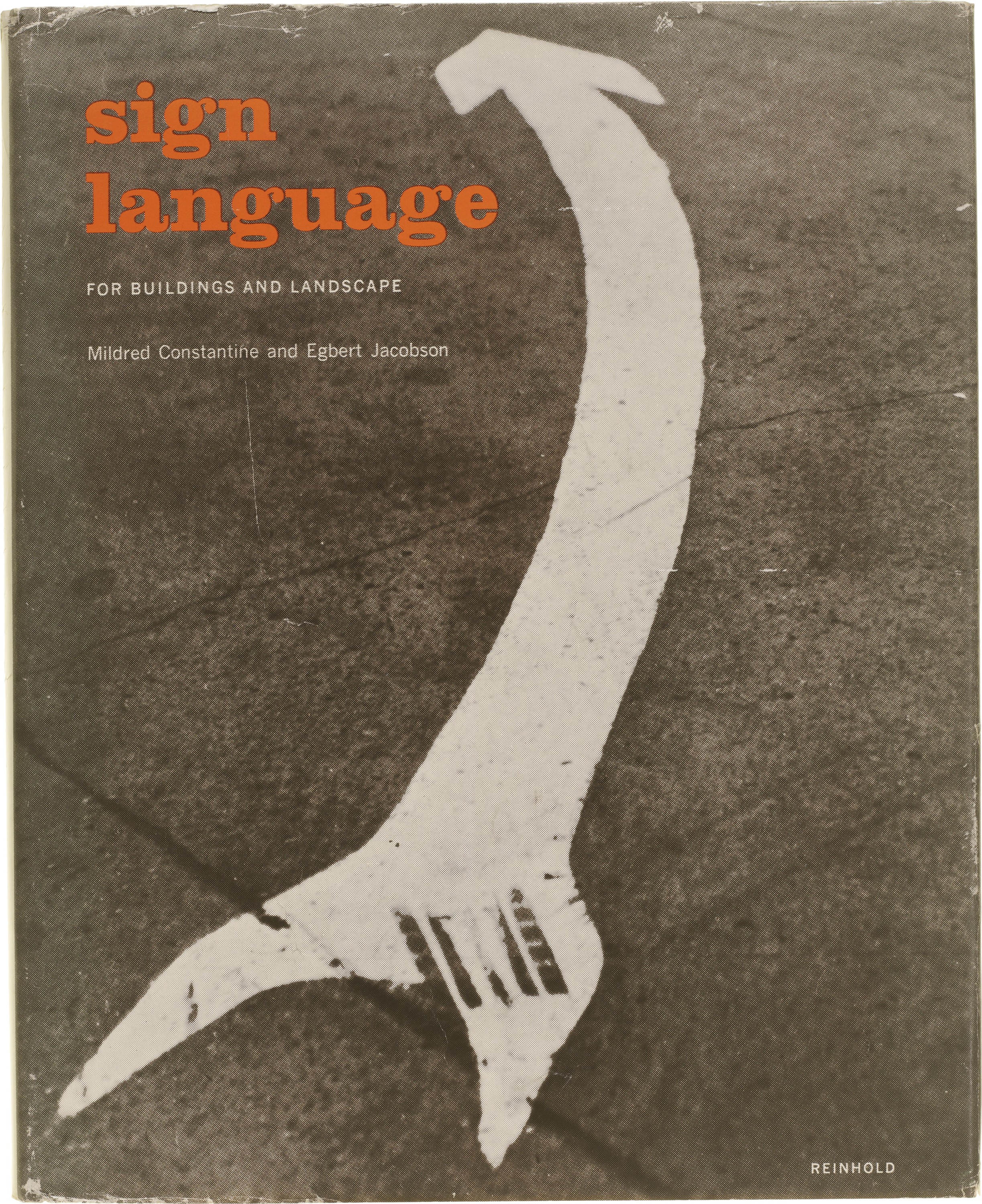
The last book in our tour is a survey of mid-20th-century graphics as found in urban and rural settings. Mildred Constantine and Egebert Jacobsen use fonts and photographs to illustrate the wide-ranging role of type and lettering in the design of signs. The book itself is designed by Elaine Lustig (Cohen), whose work is synonymous with mid-century styled graphic designs, many of which can be found at the Archive.


The Archive’s reference library is just as fascinating as its archival collection. We’ll continue to explore the extensive and diverse stacks as part of this “For Your Reference” series. While I’m looking at these books from afar, the Archive welcomes research visitors to spend time with them in-person, and use the library’s encyclopedic offerings for inspiring their own work.
— Tanya George
